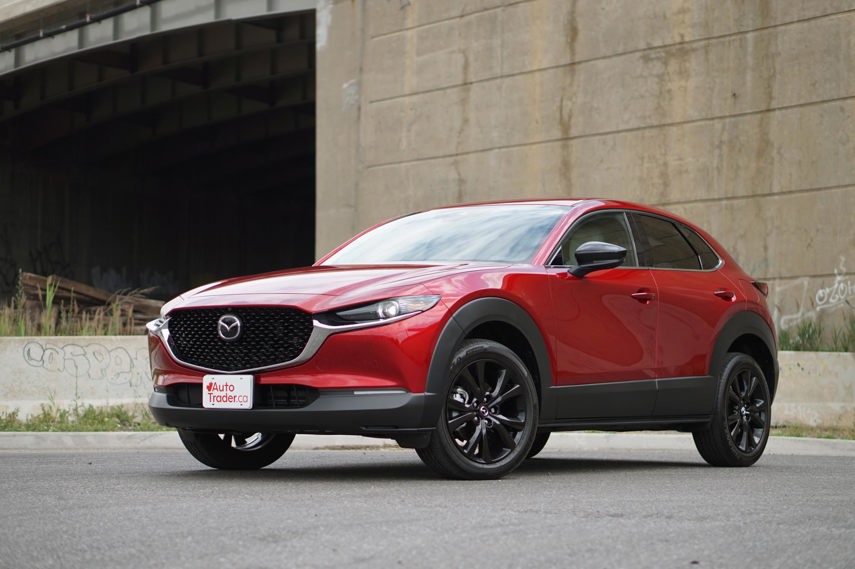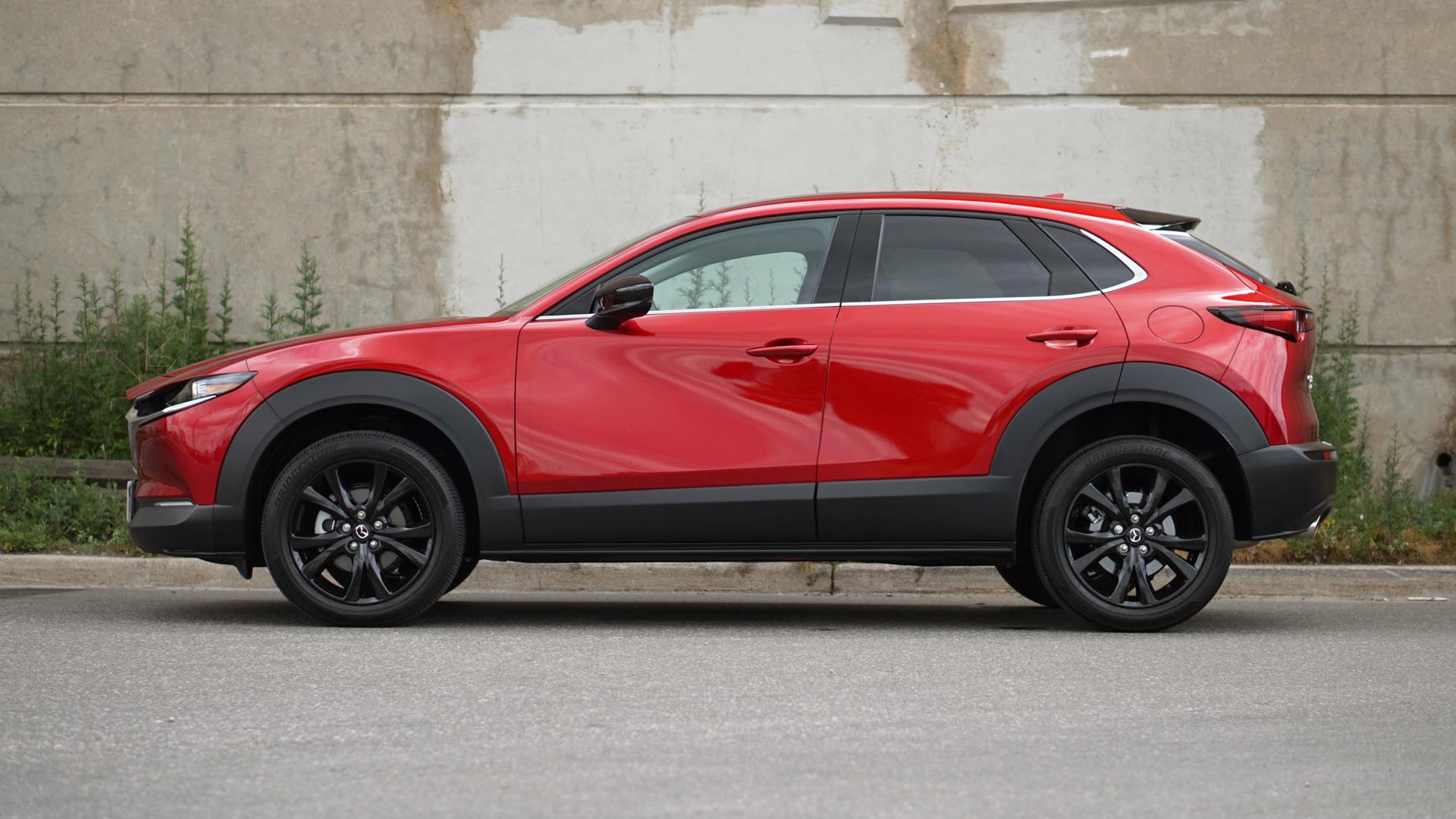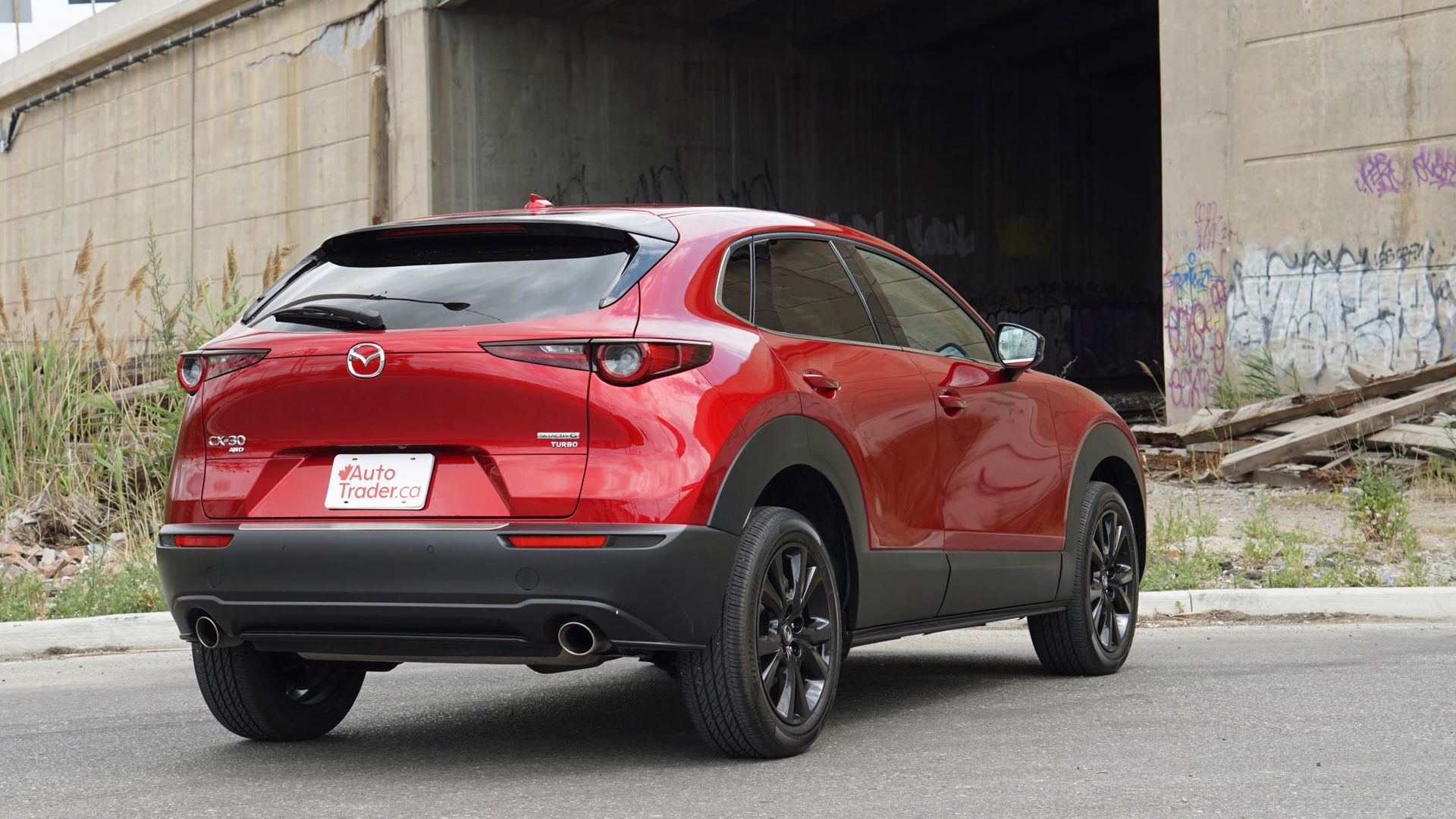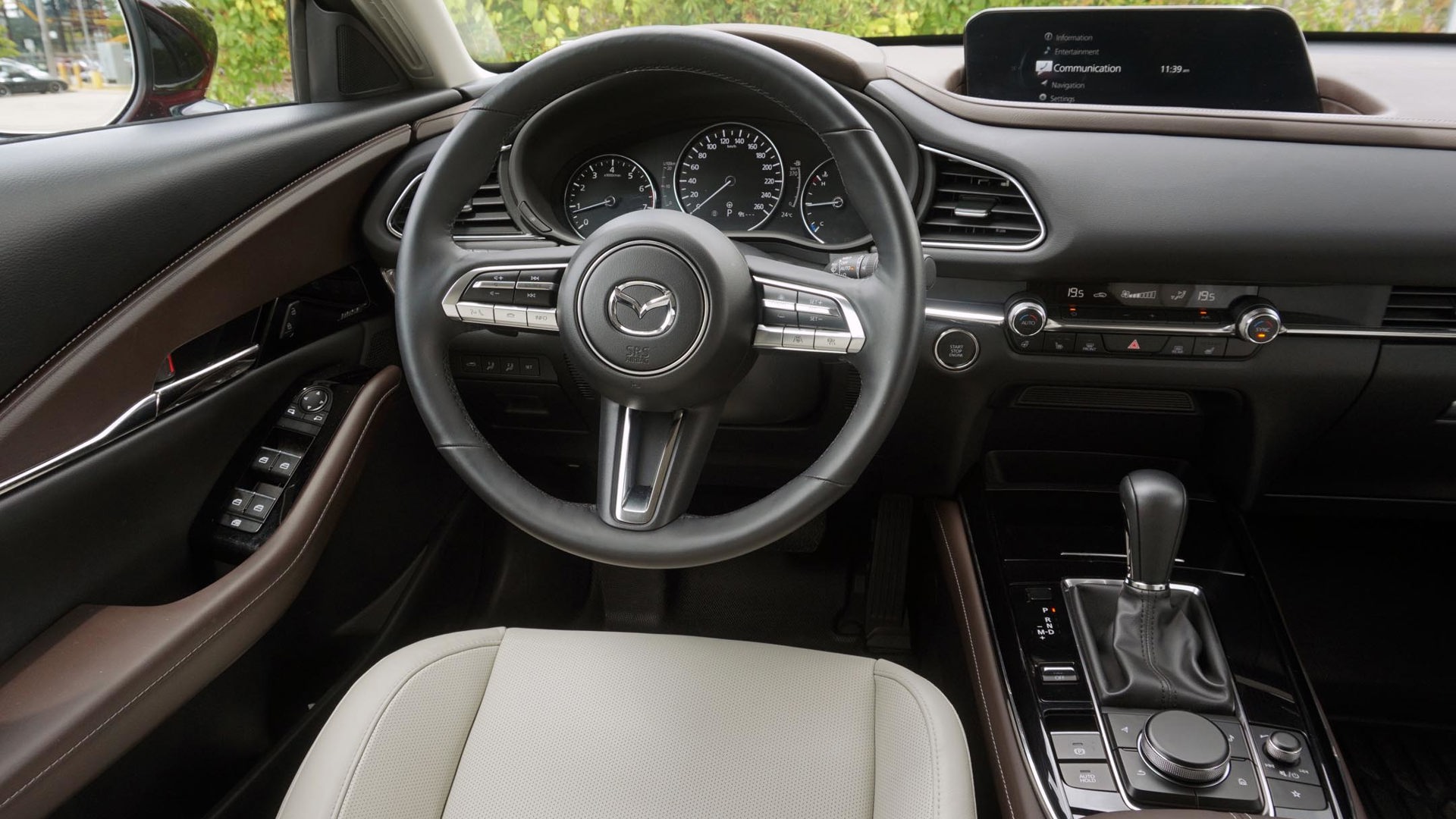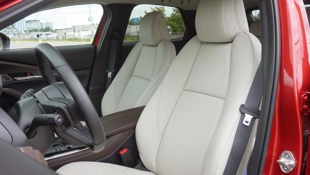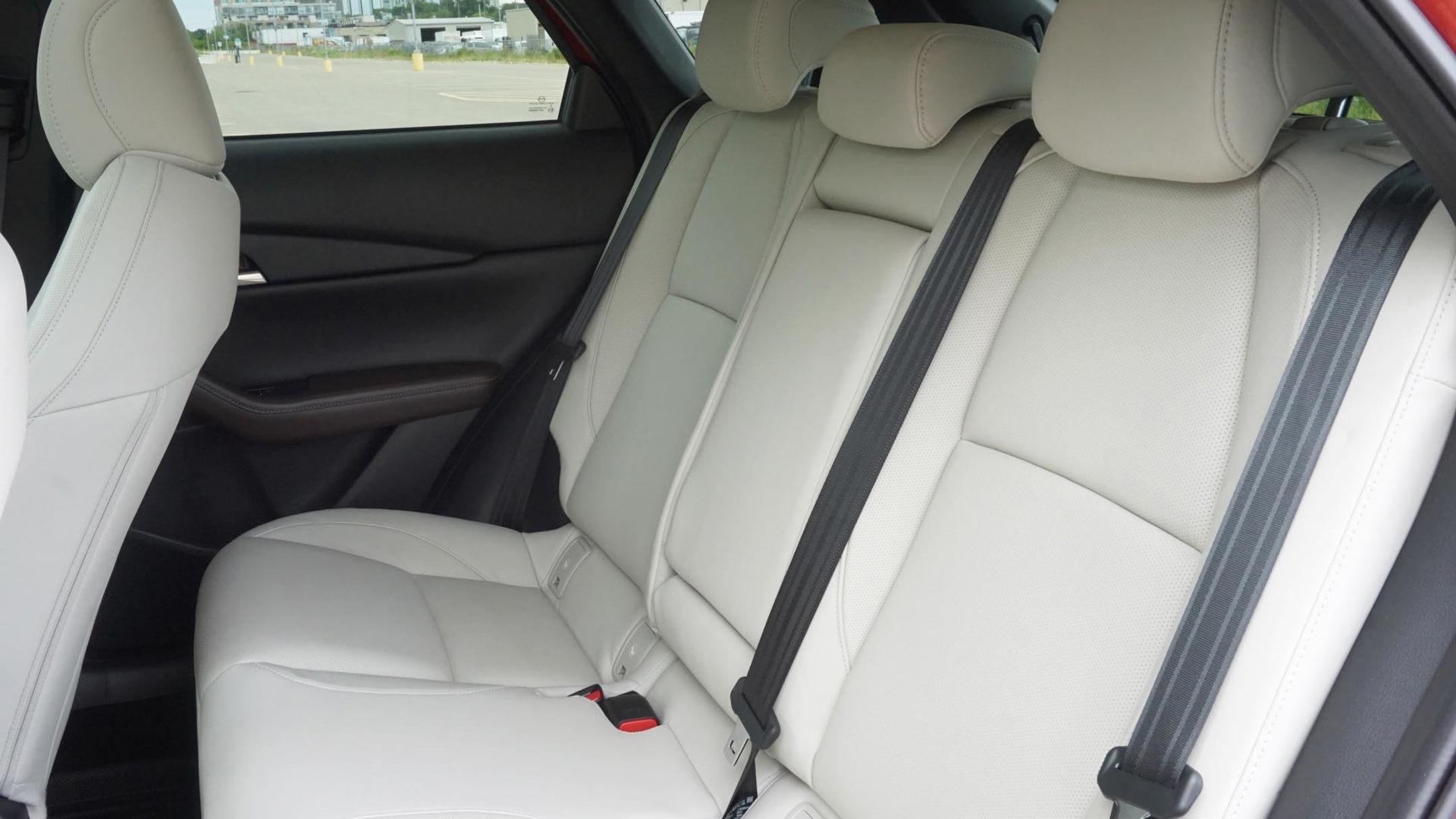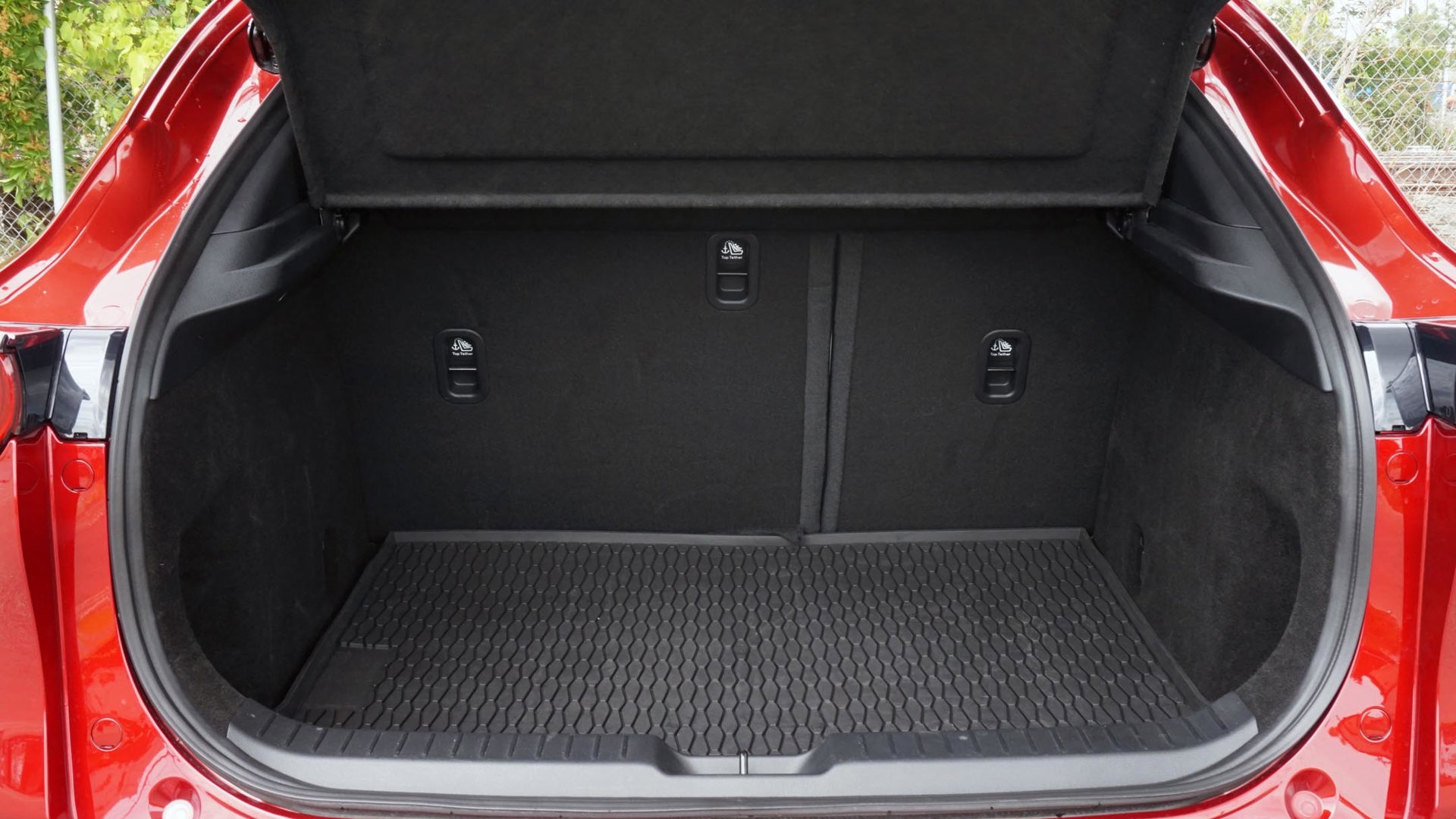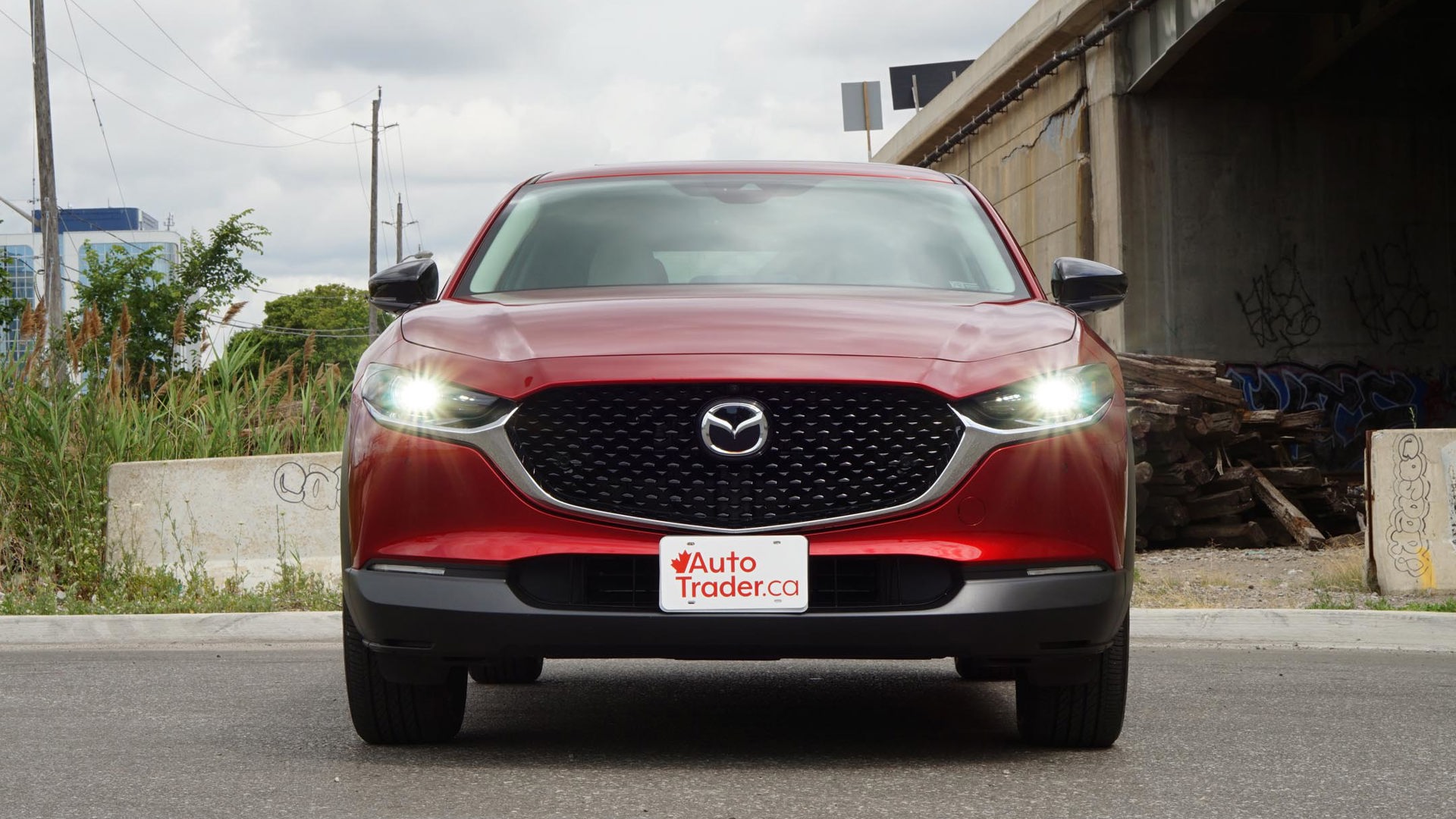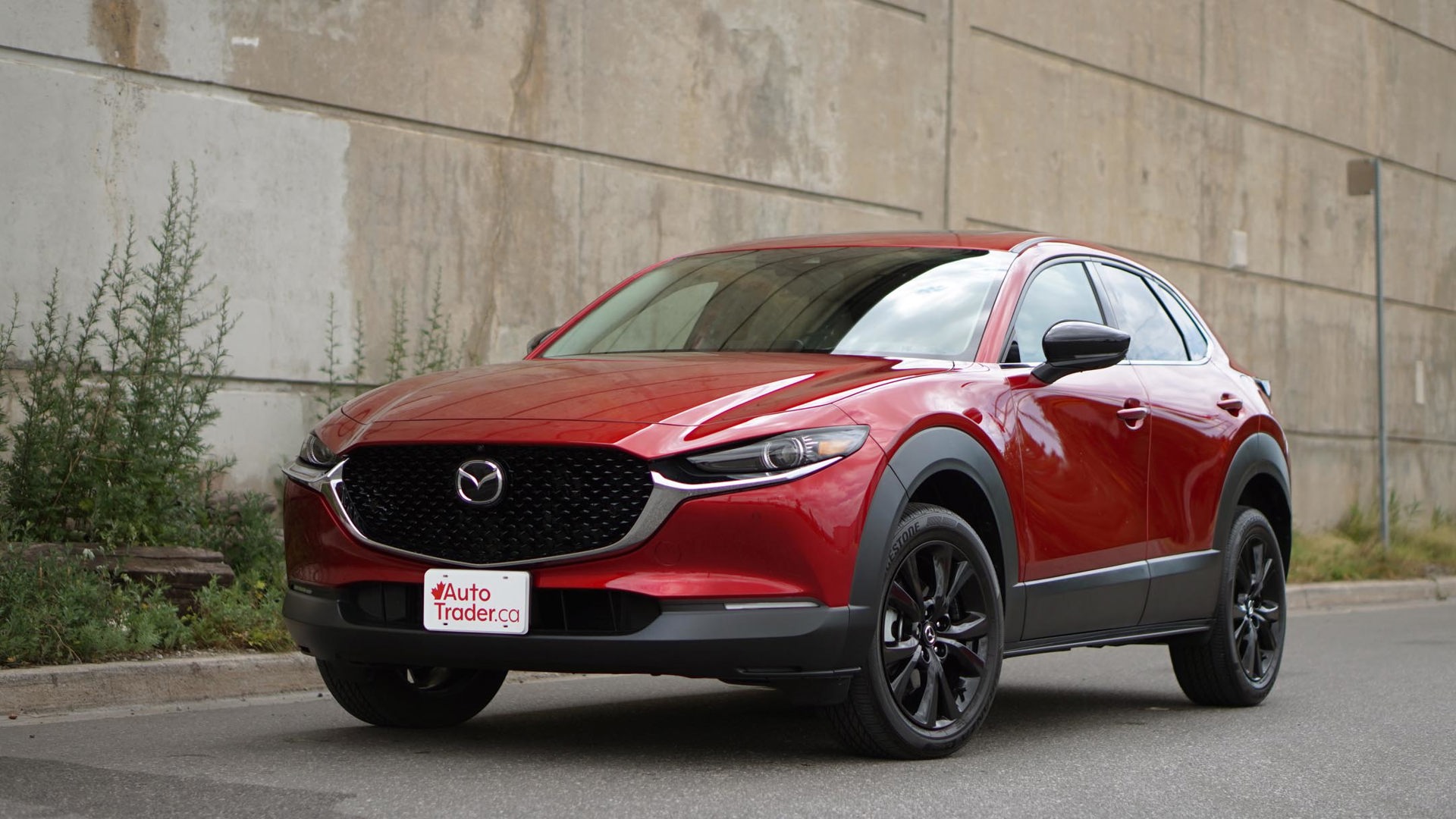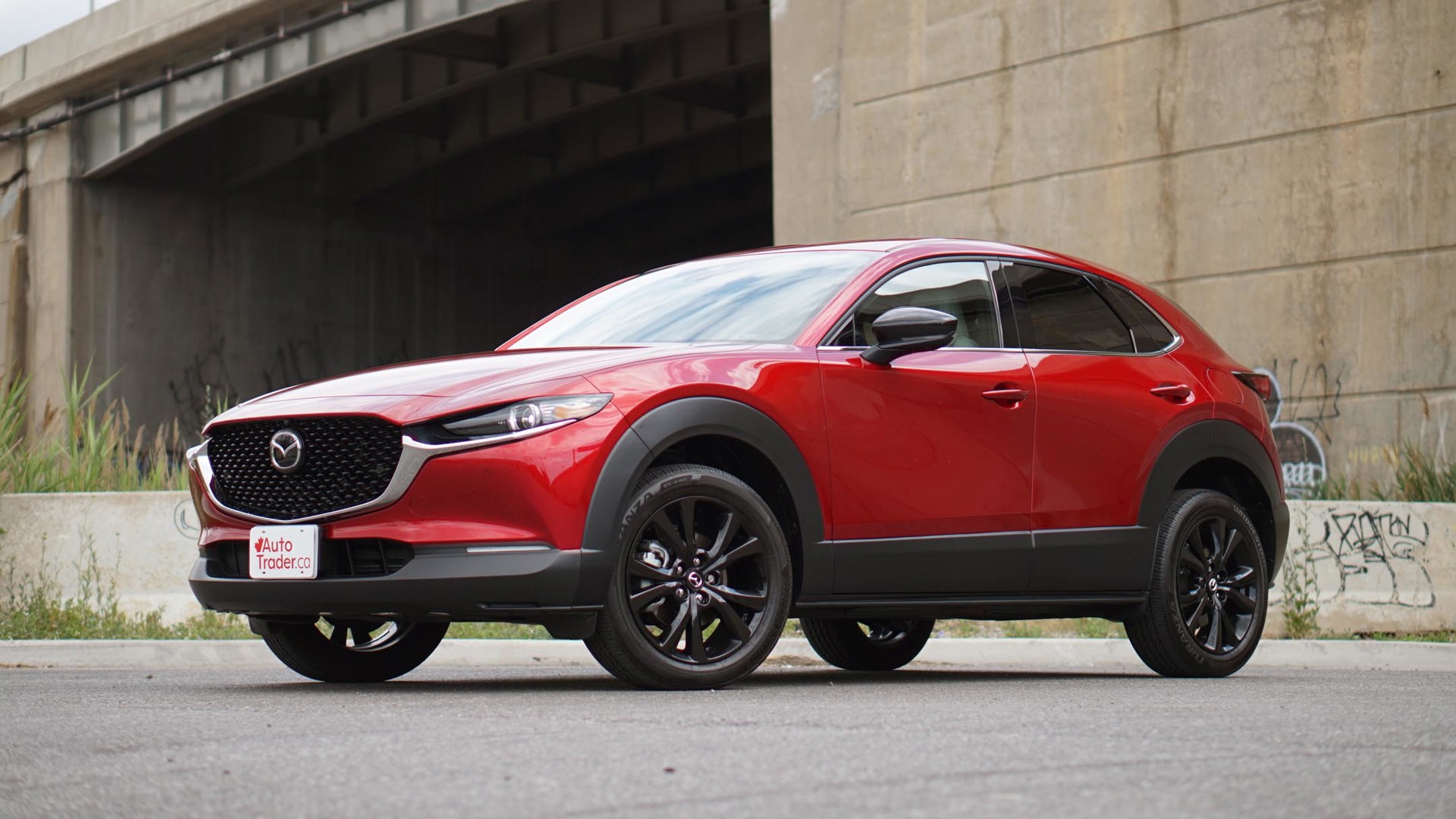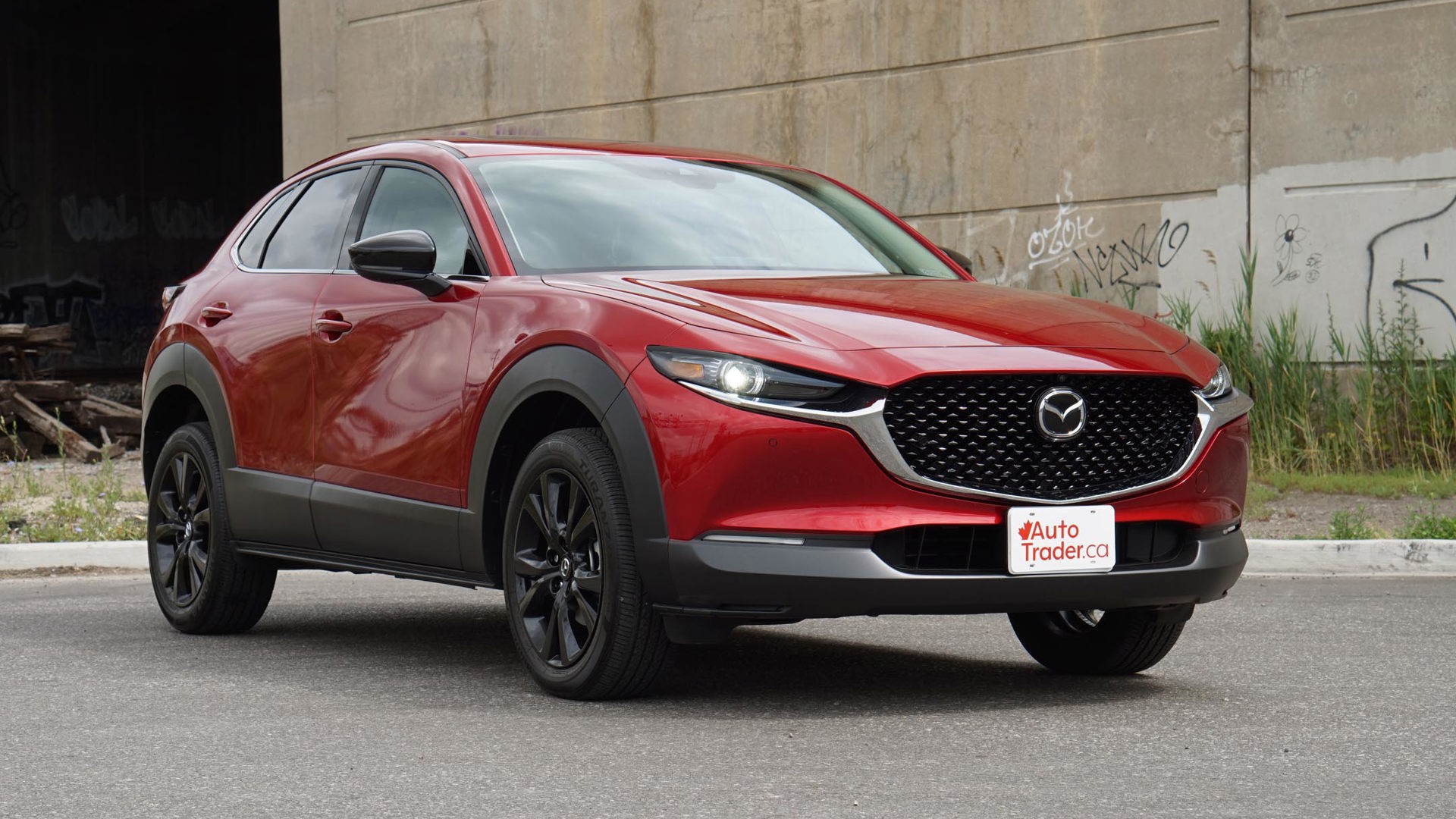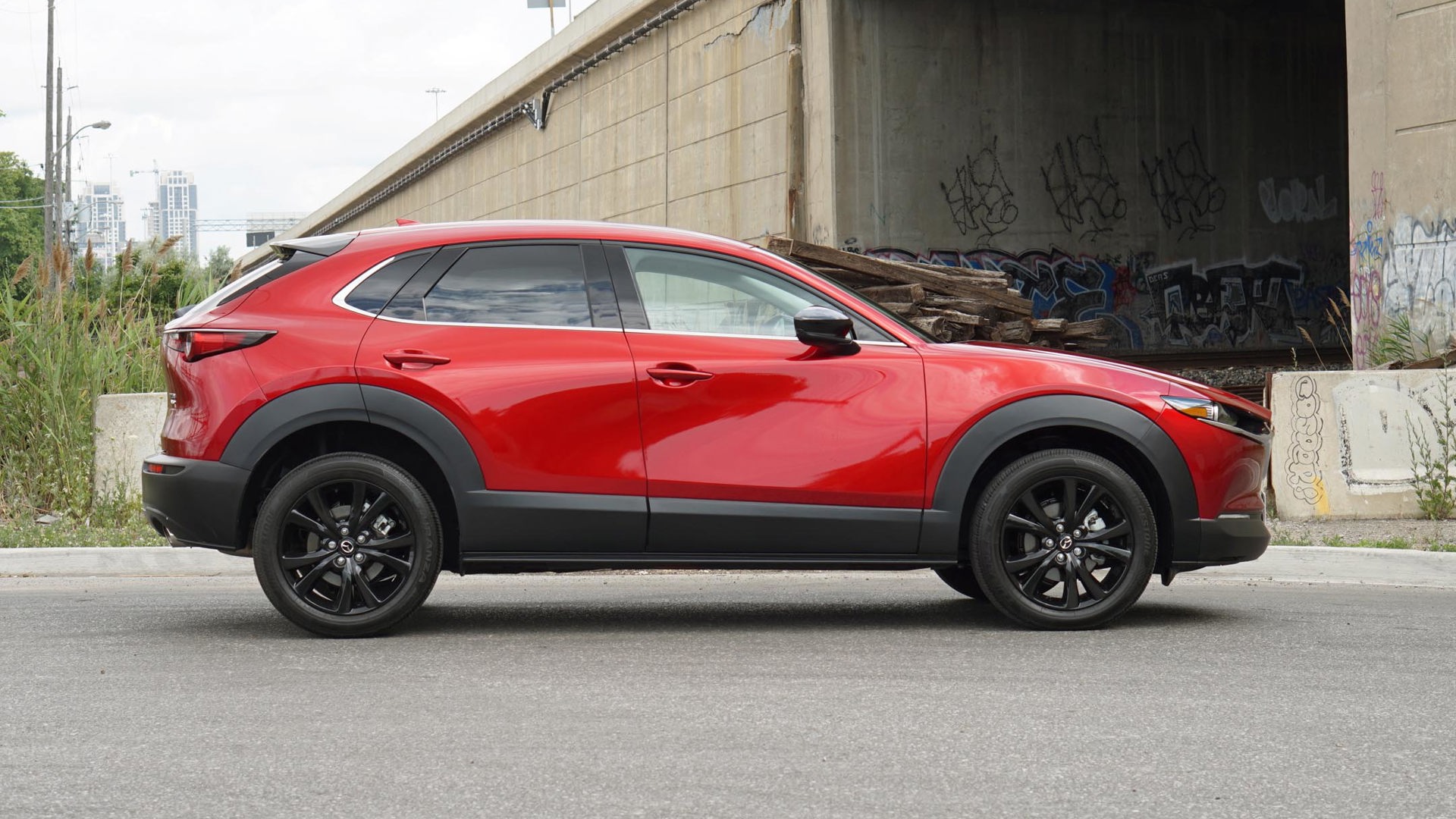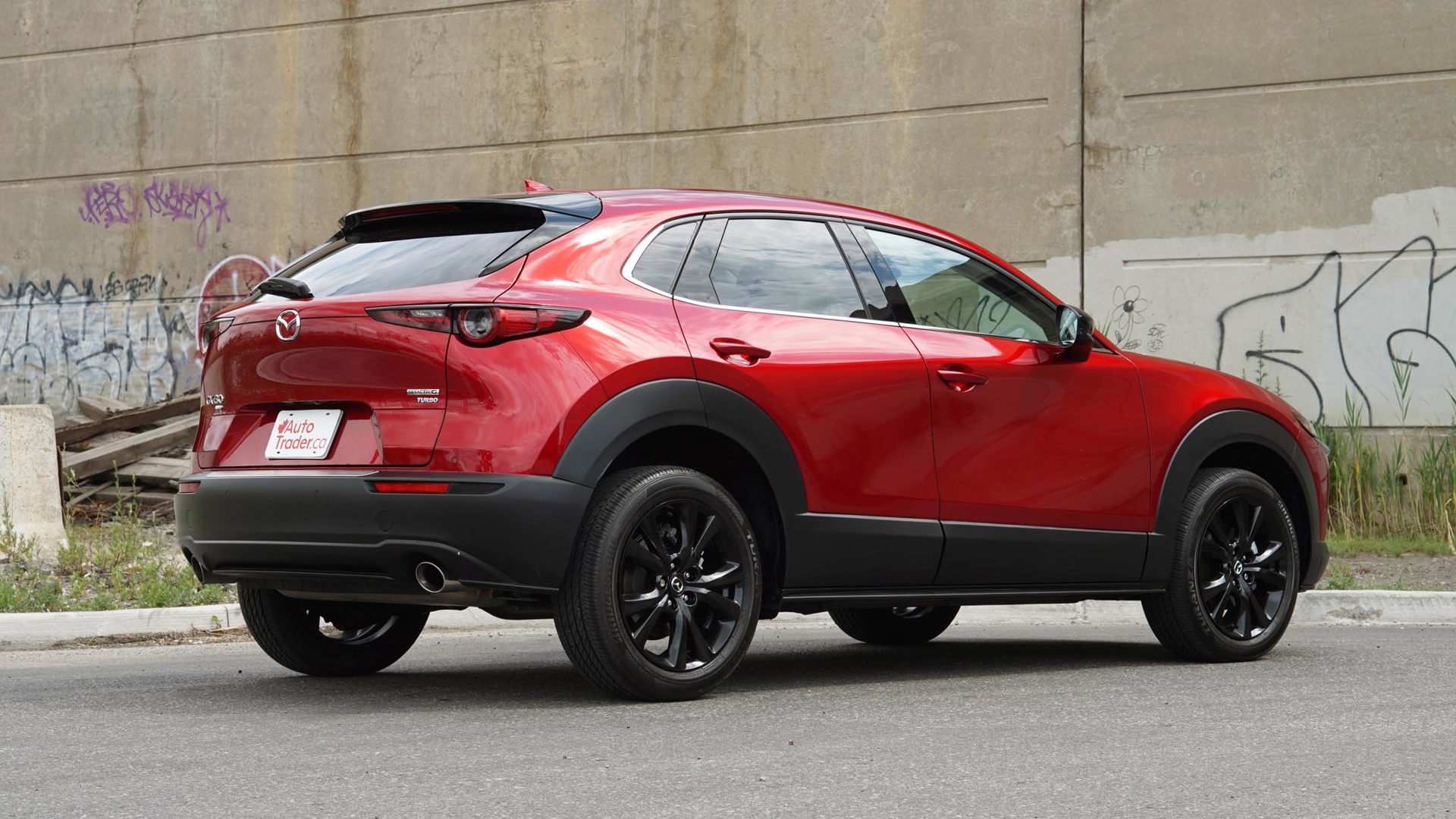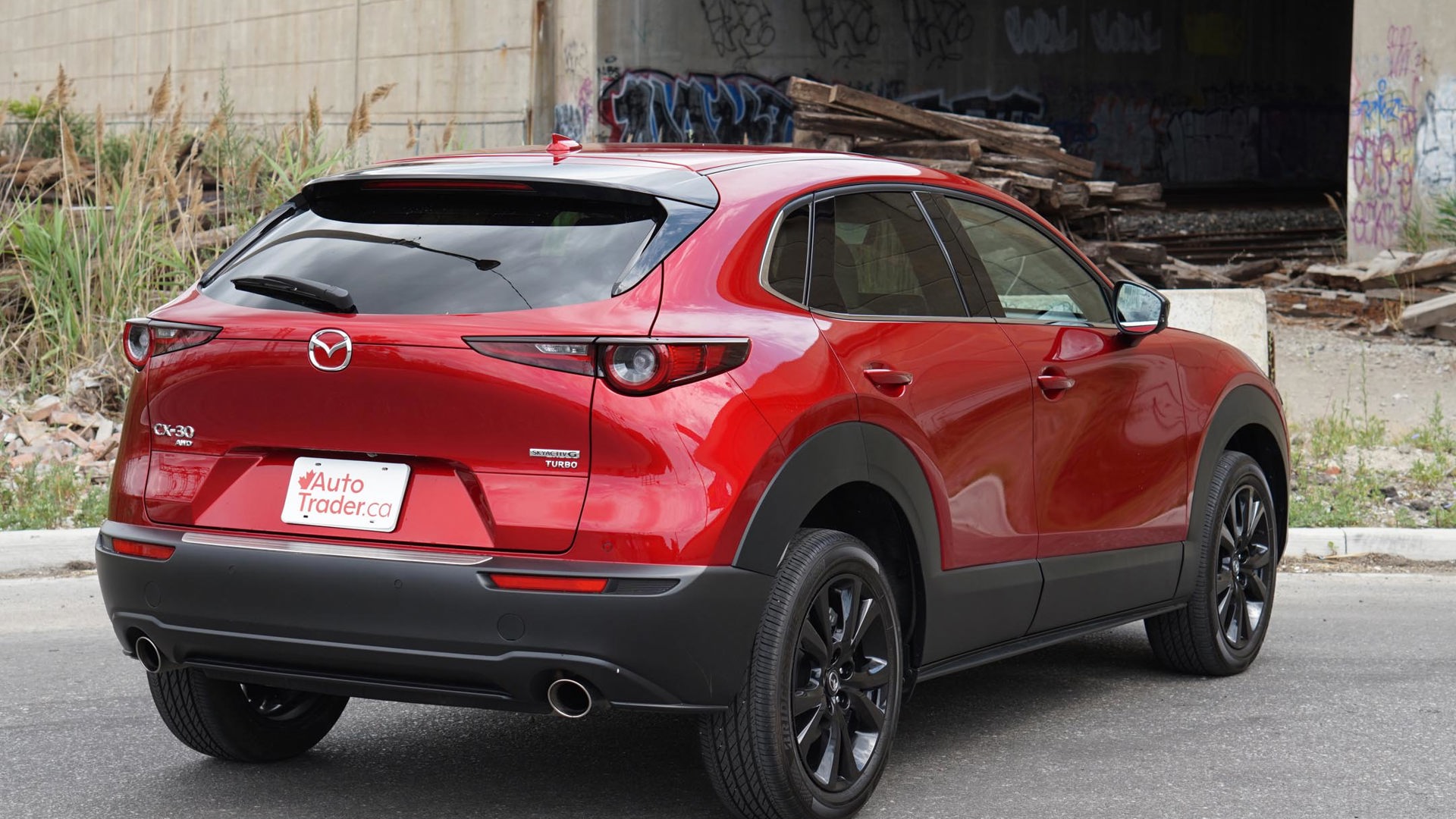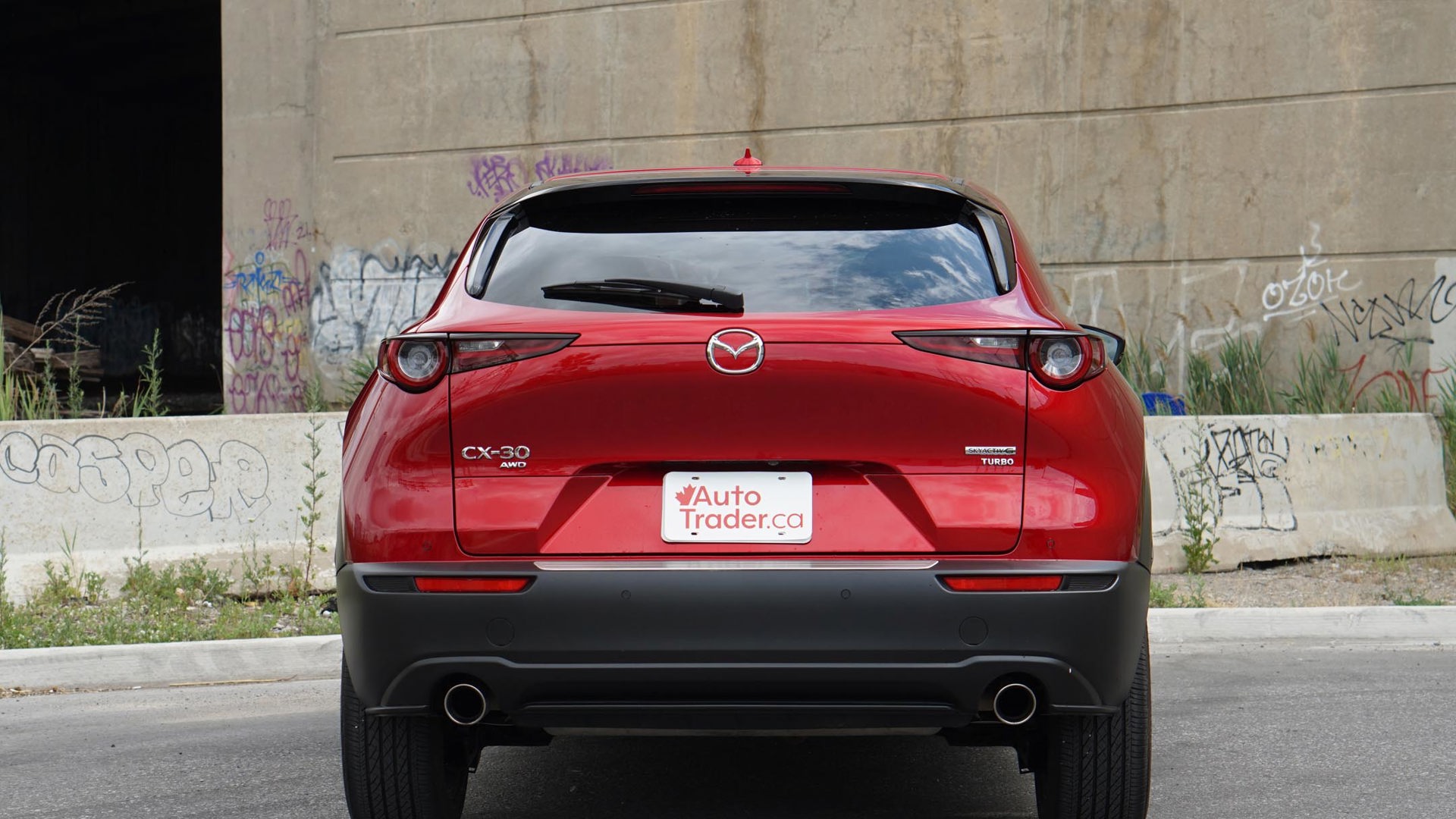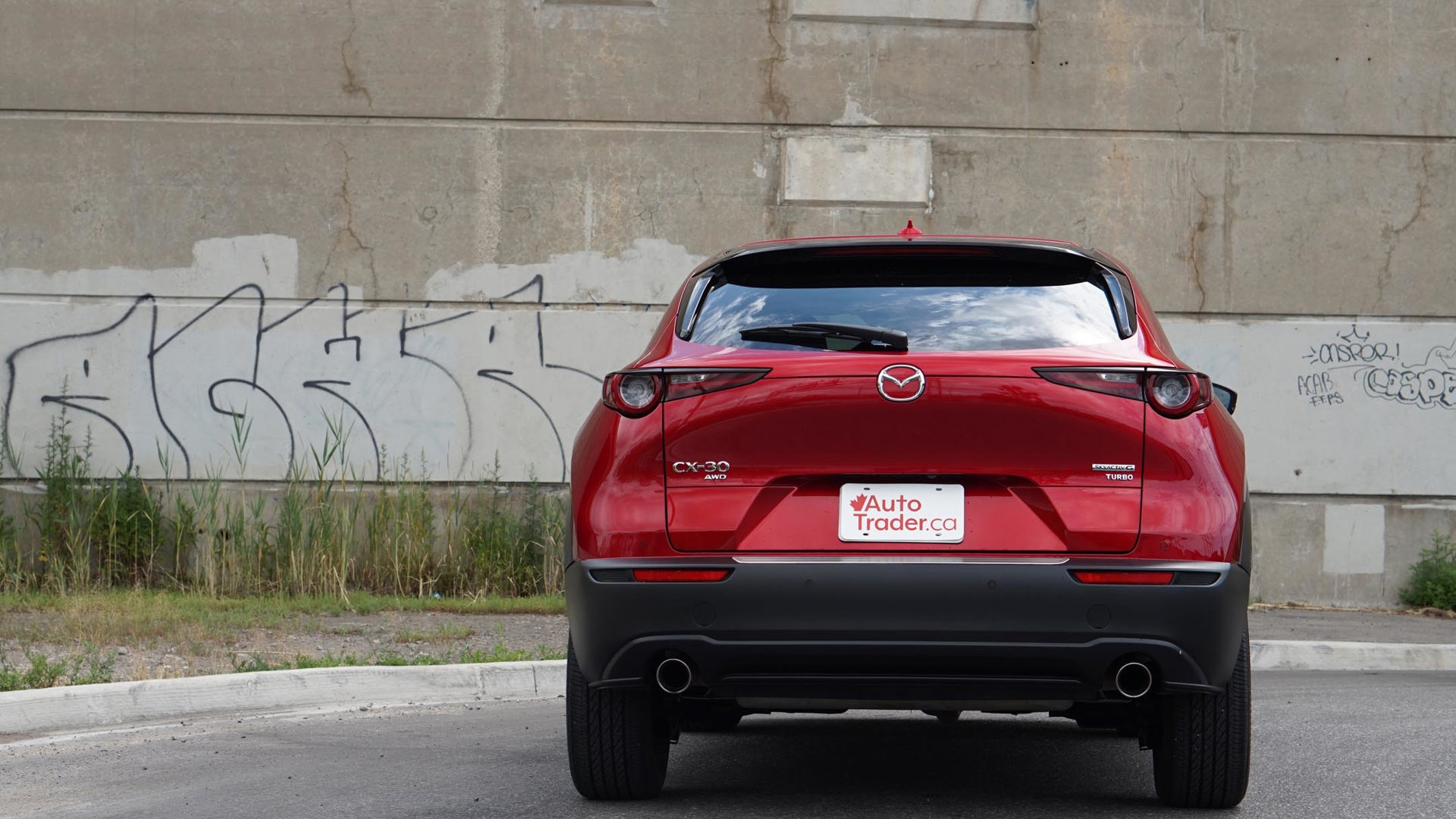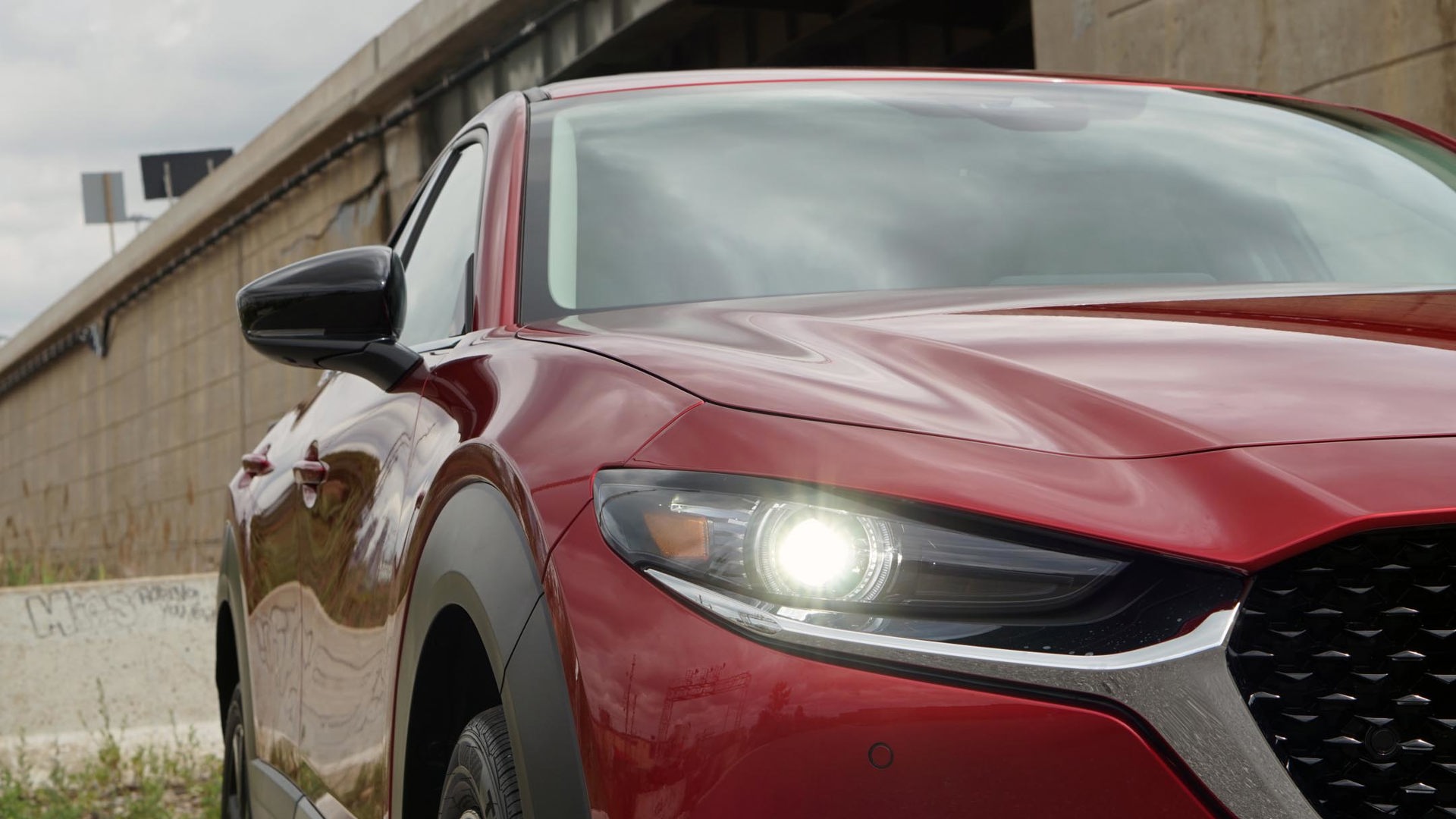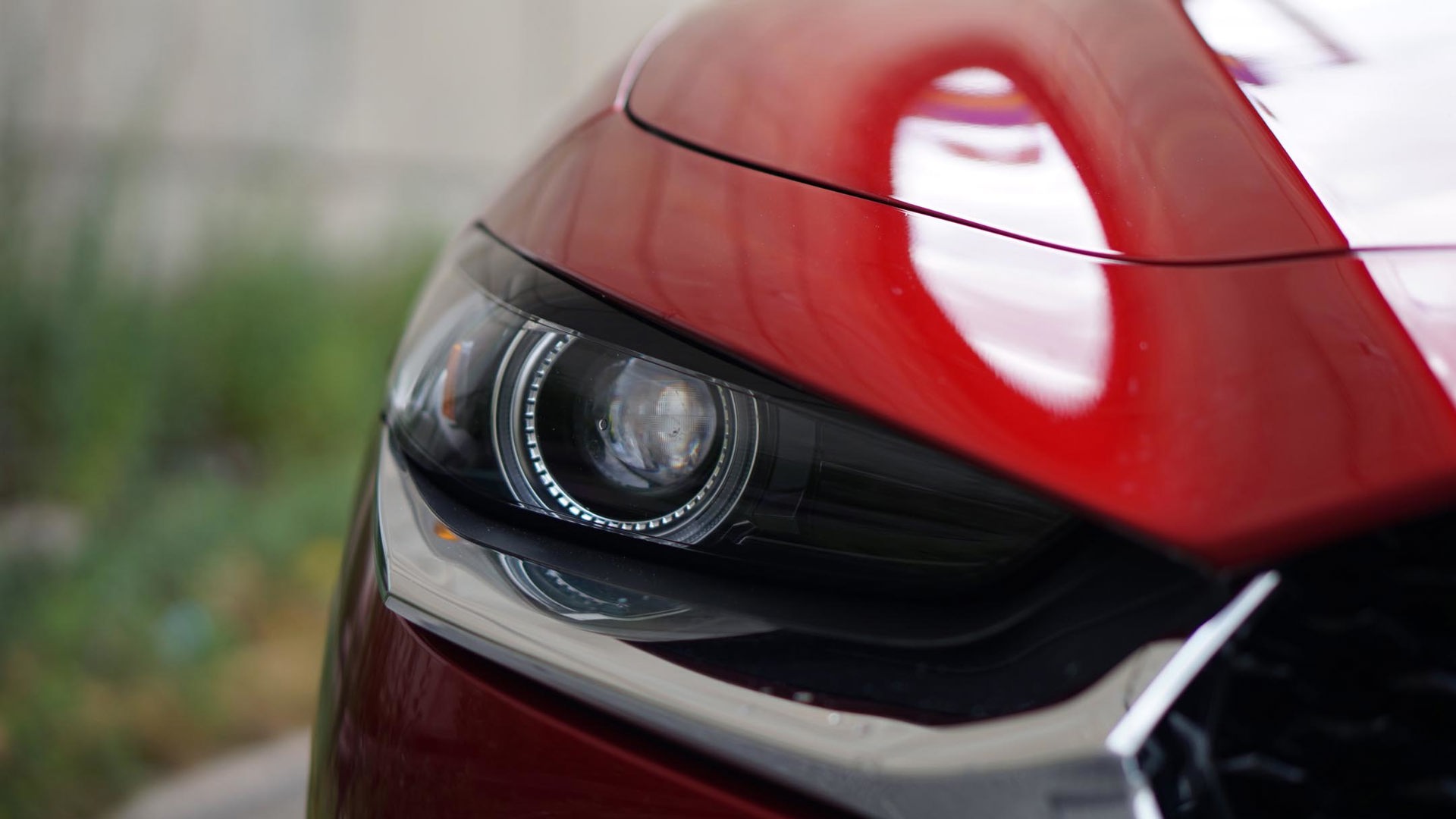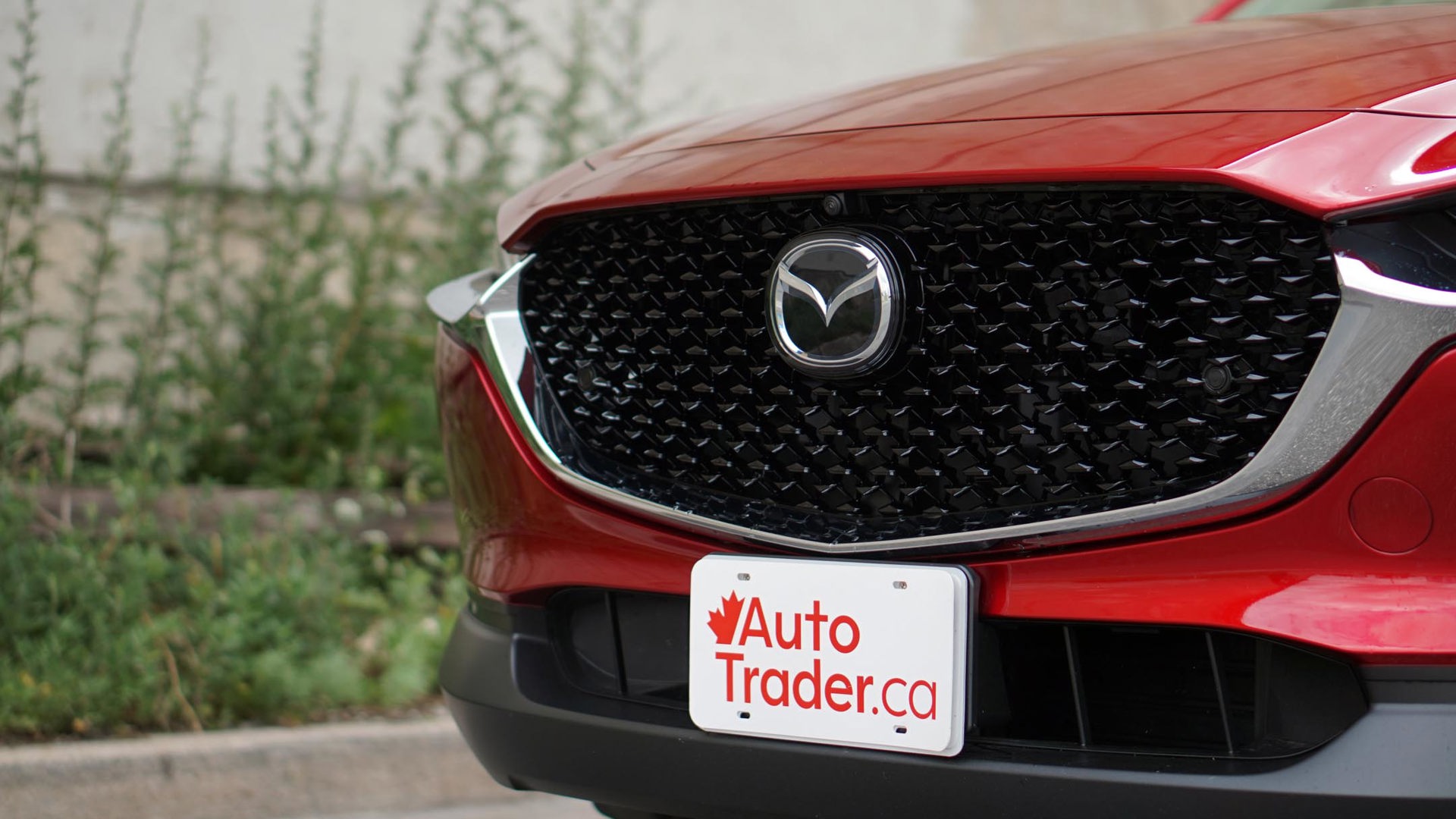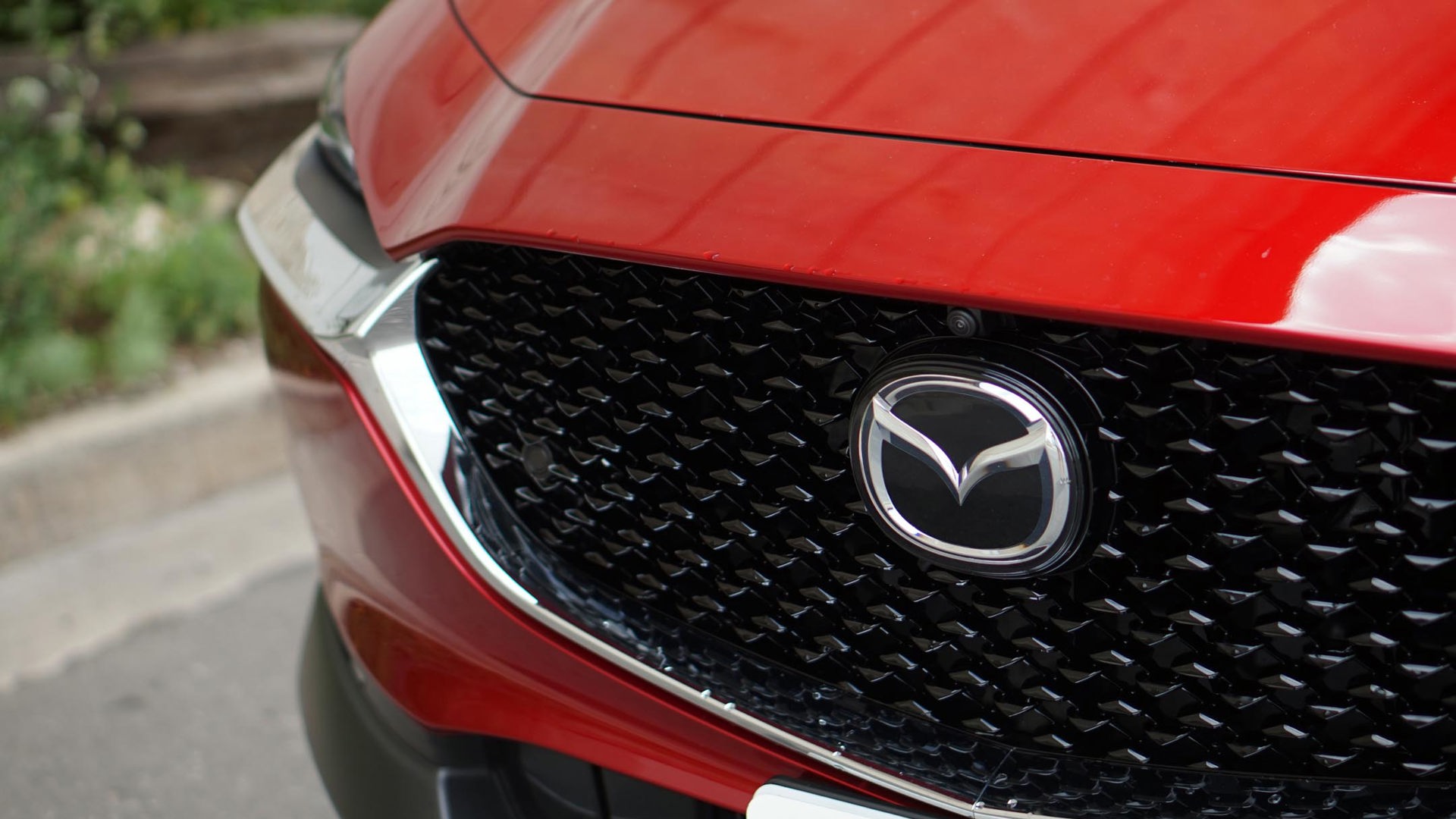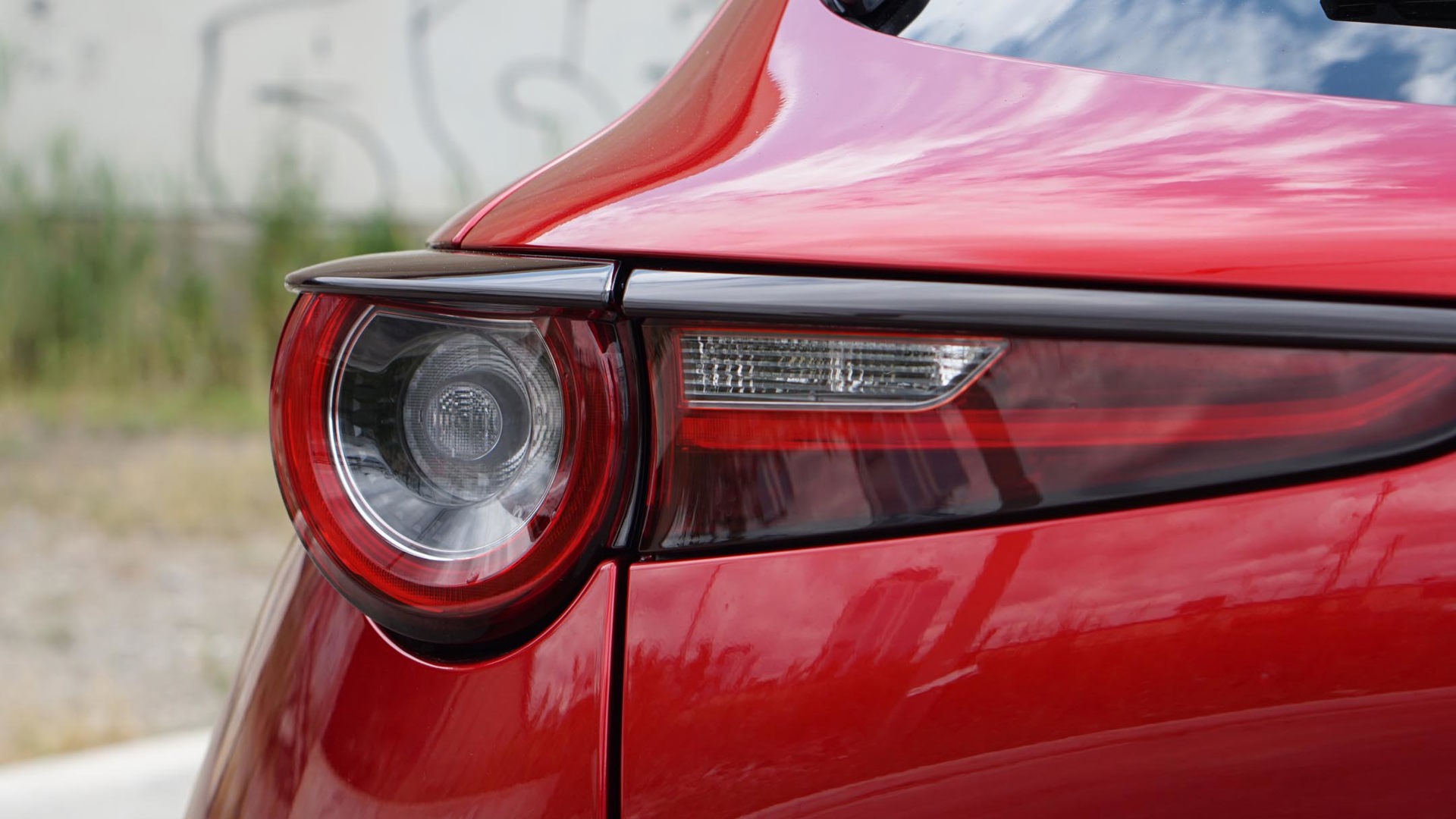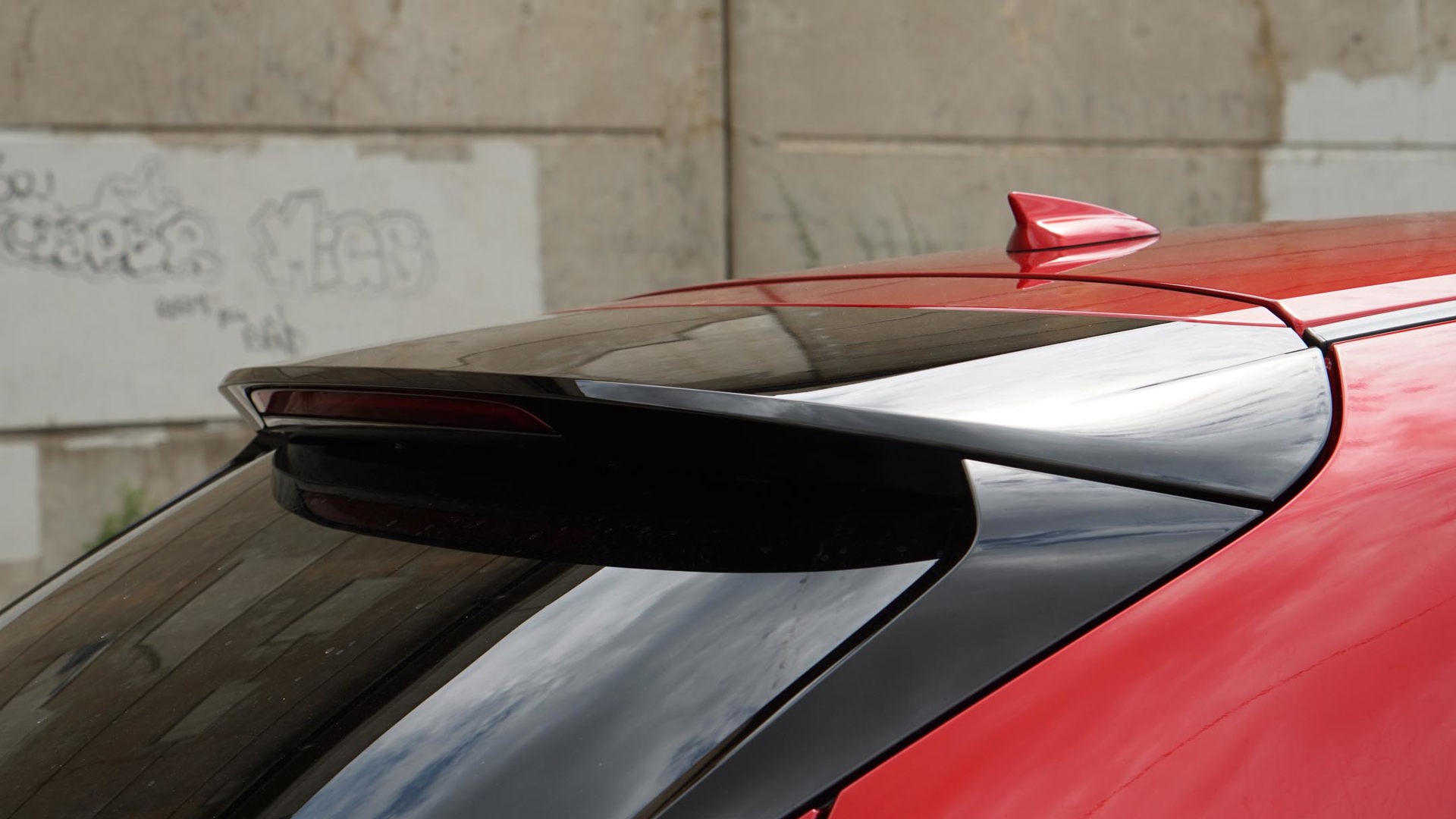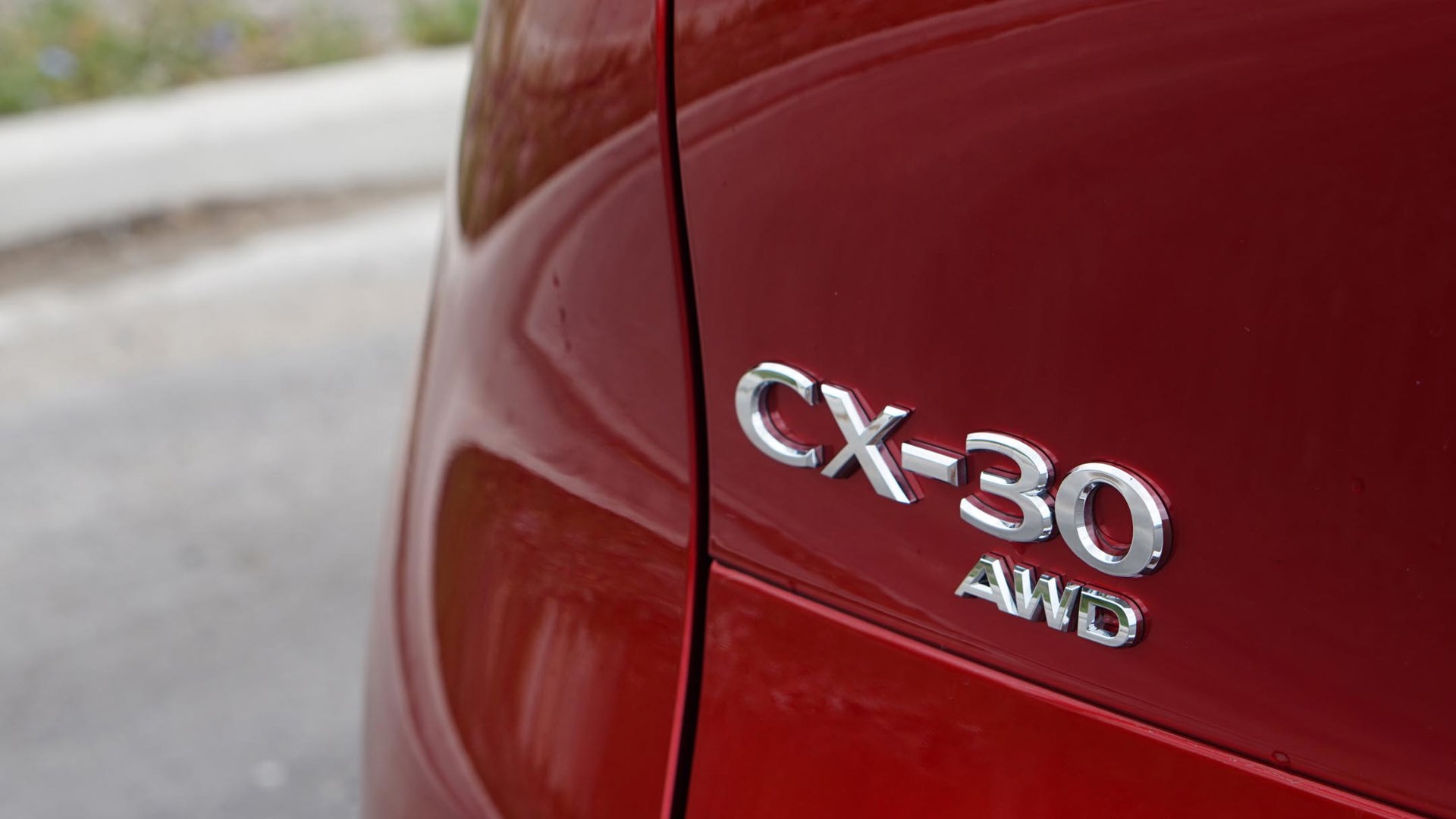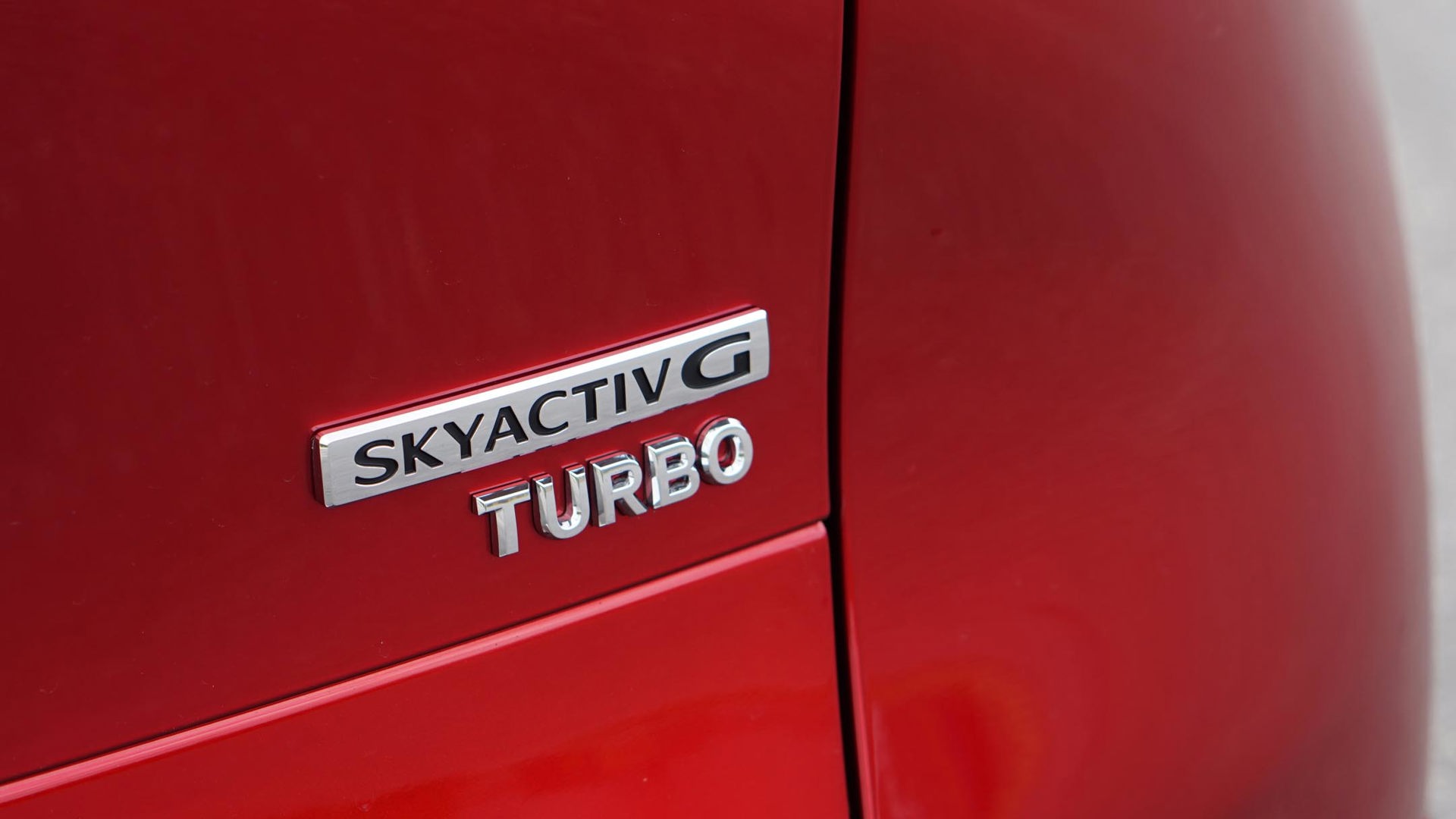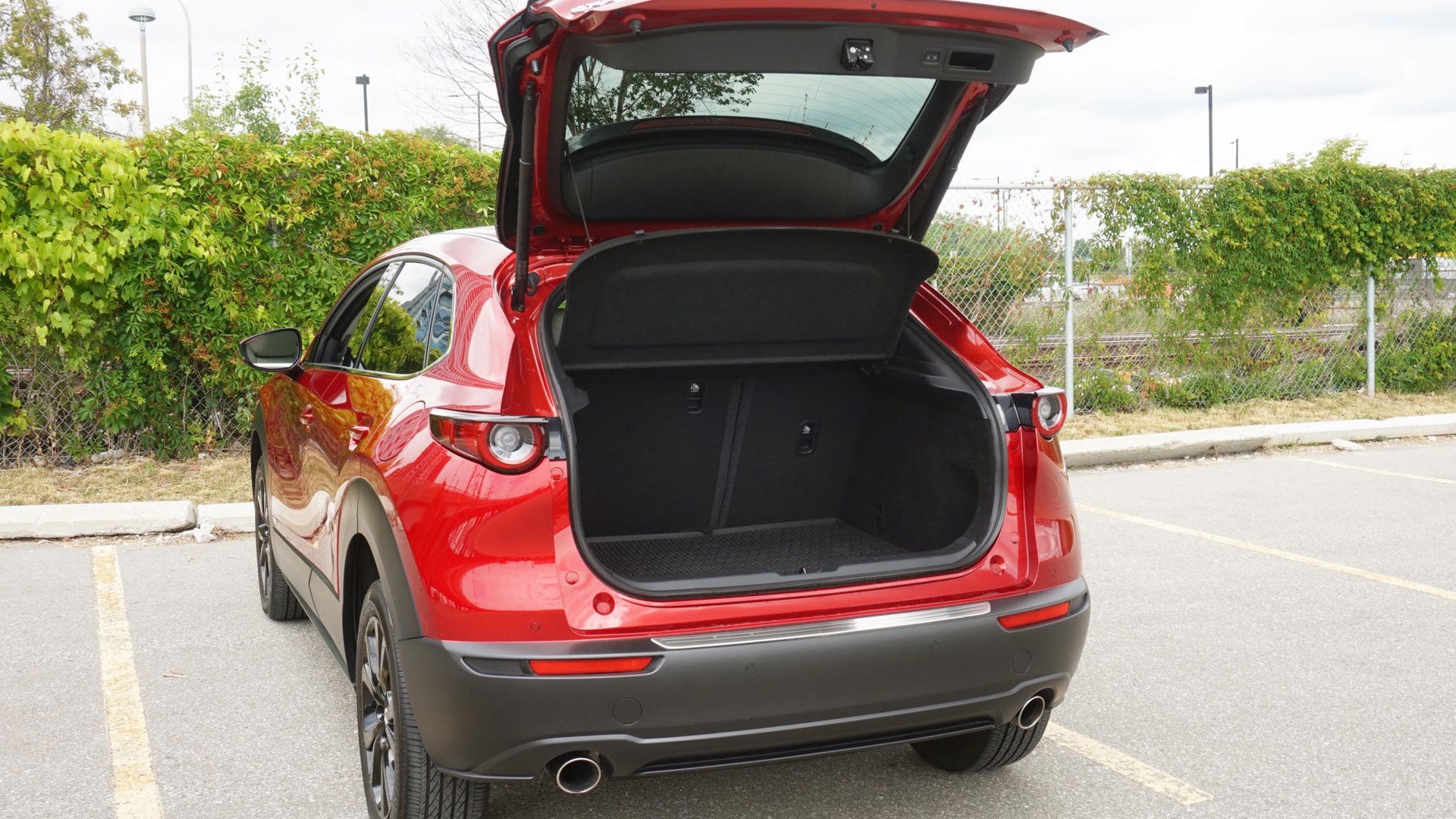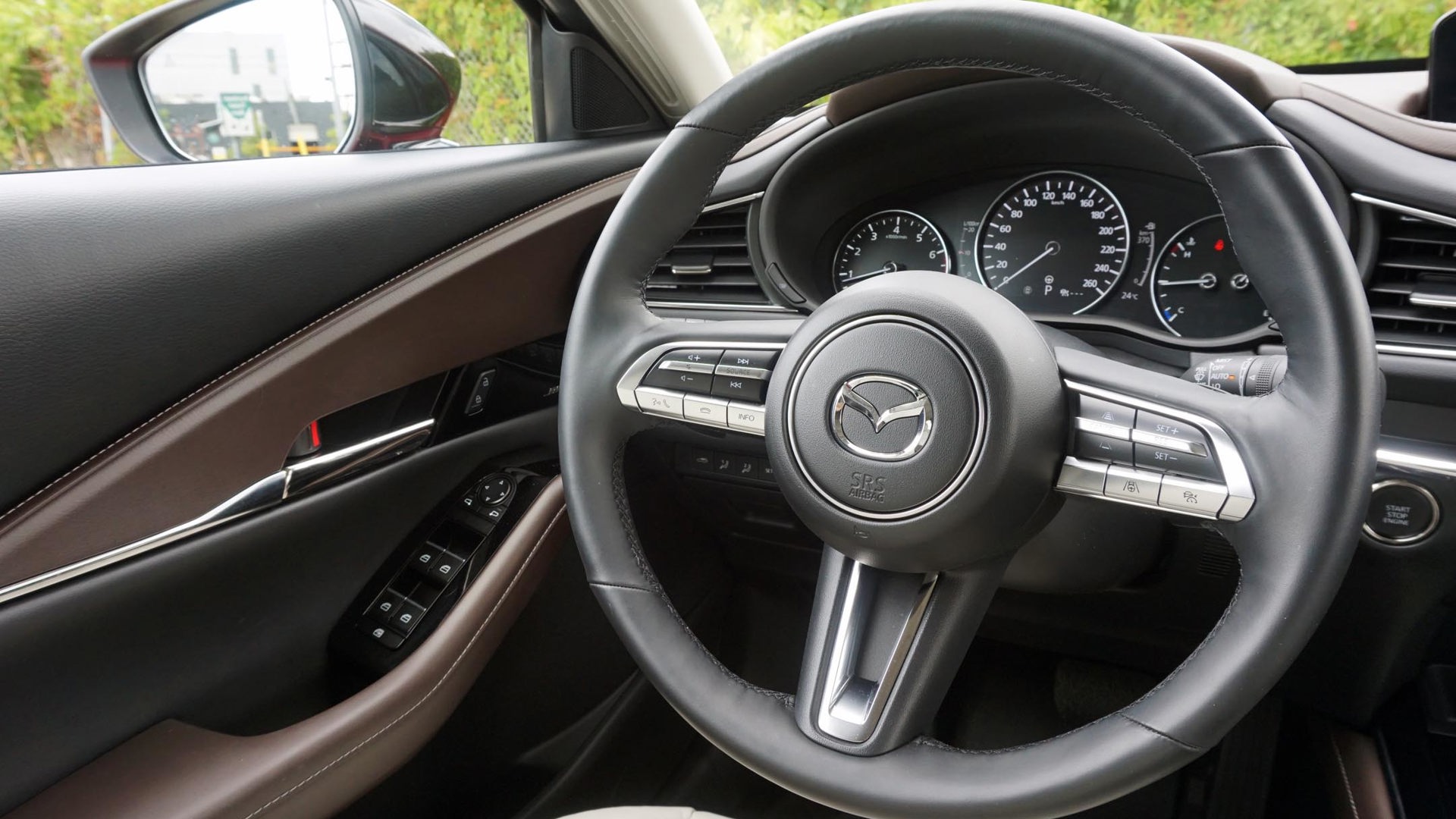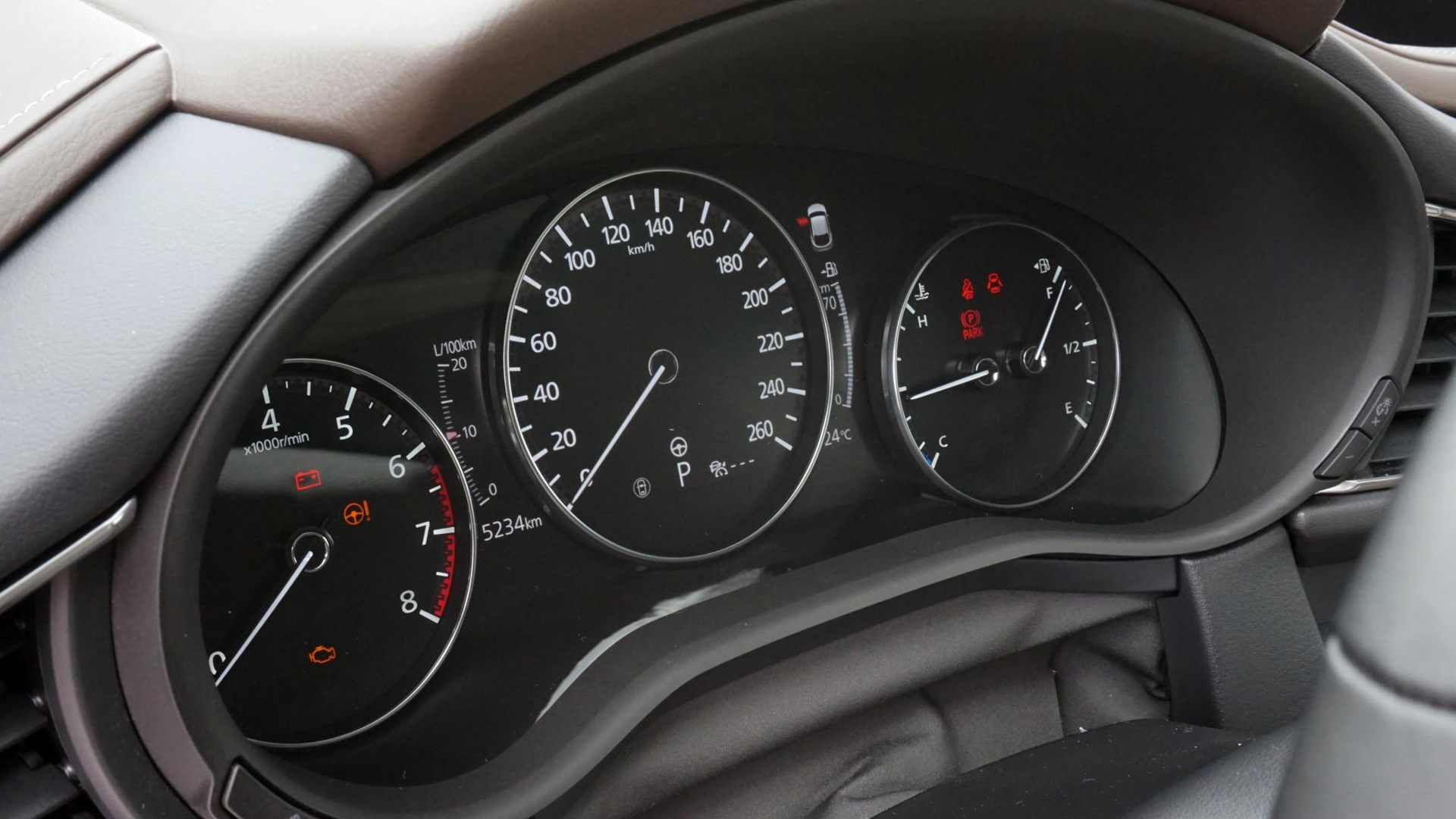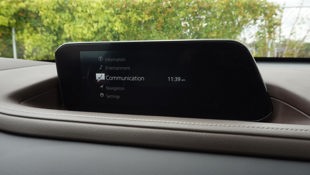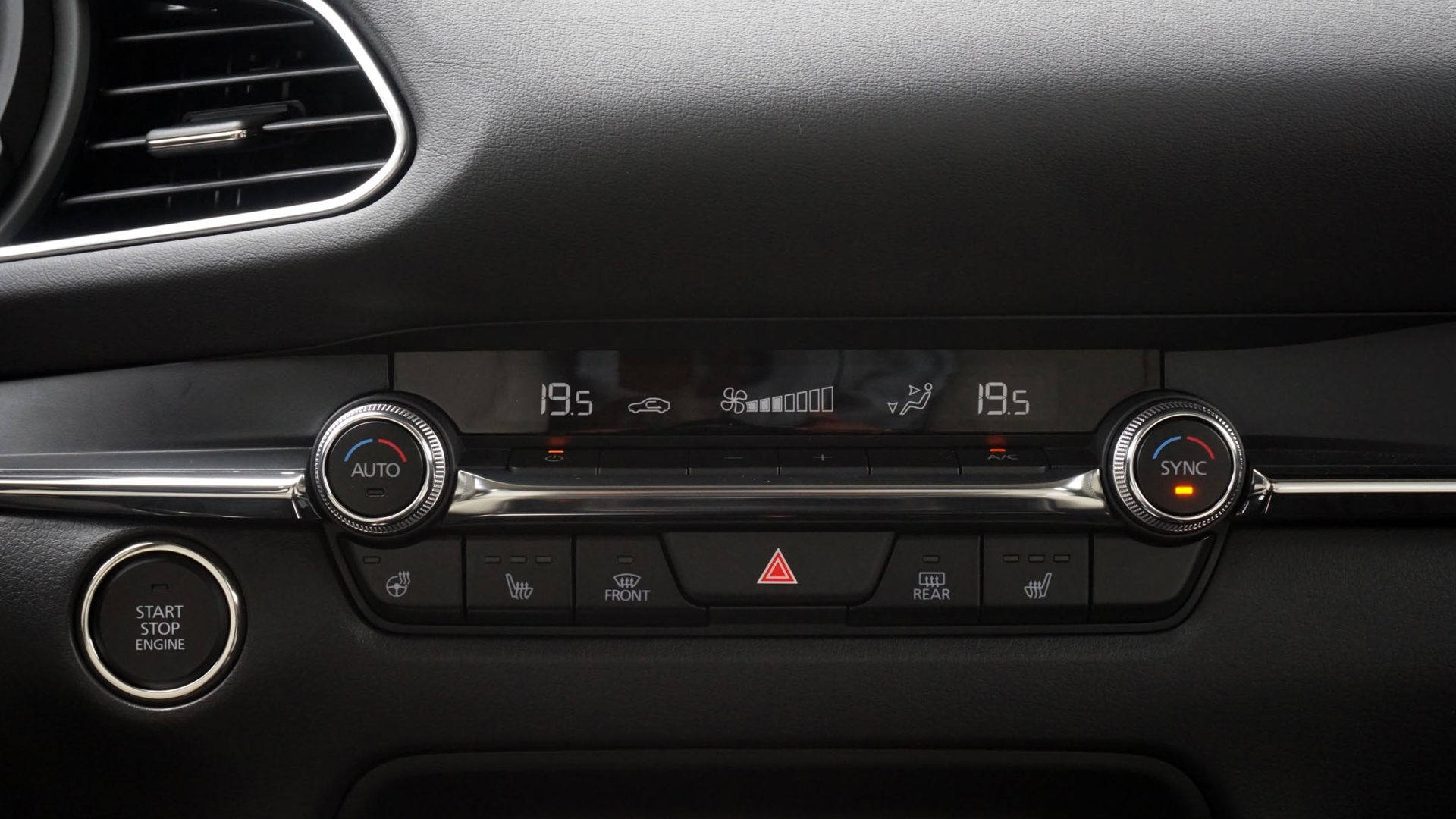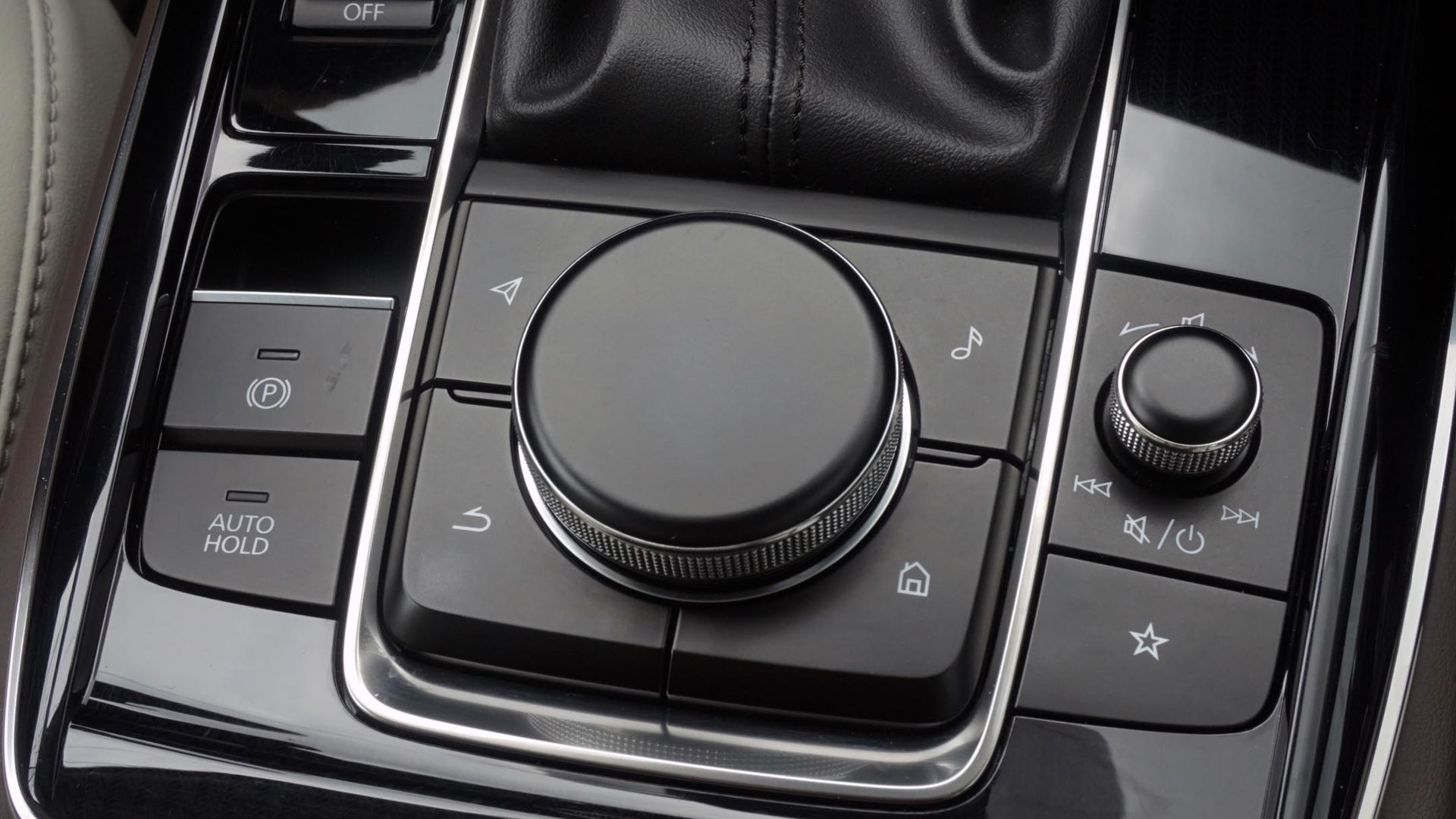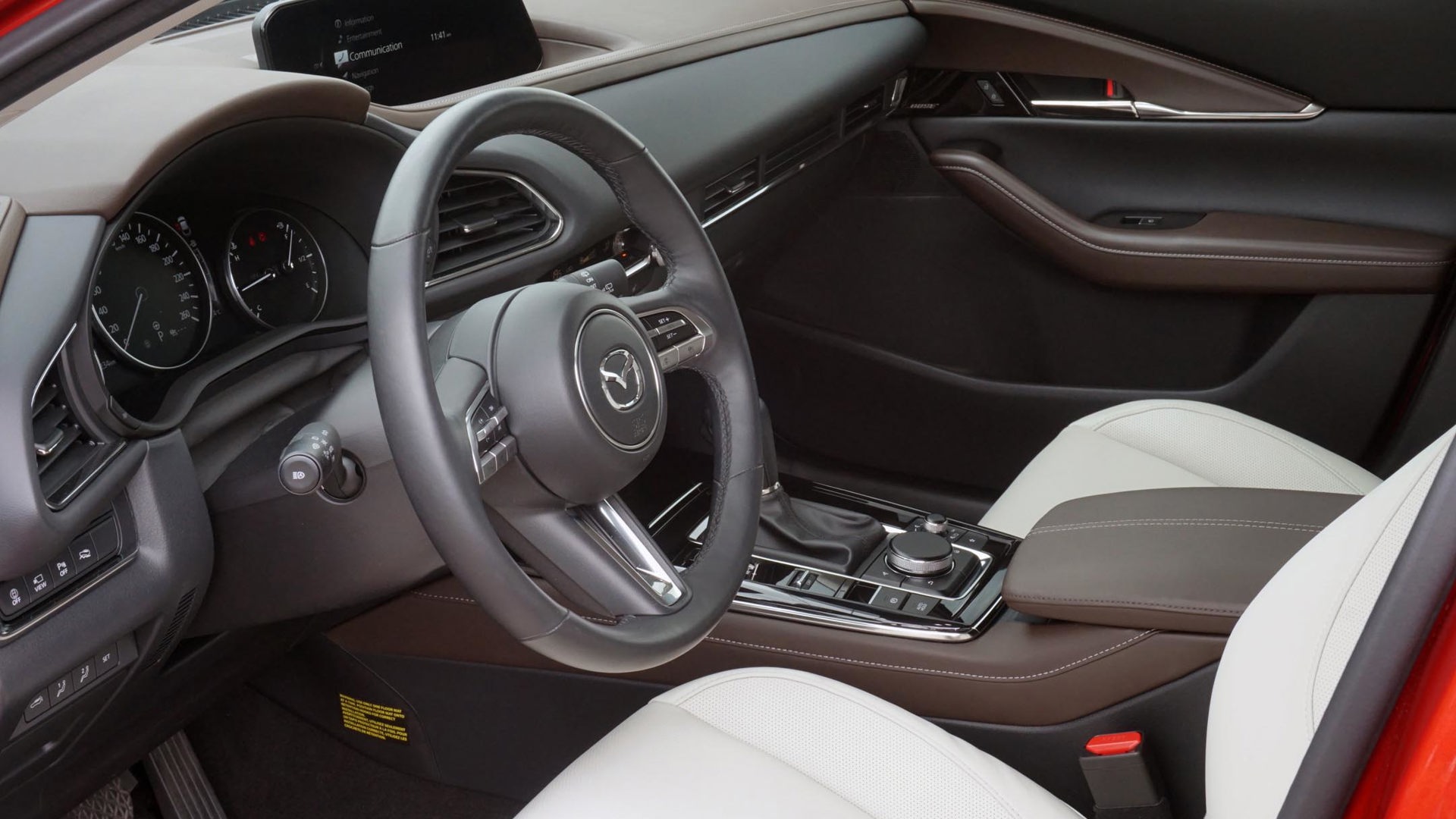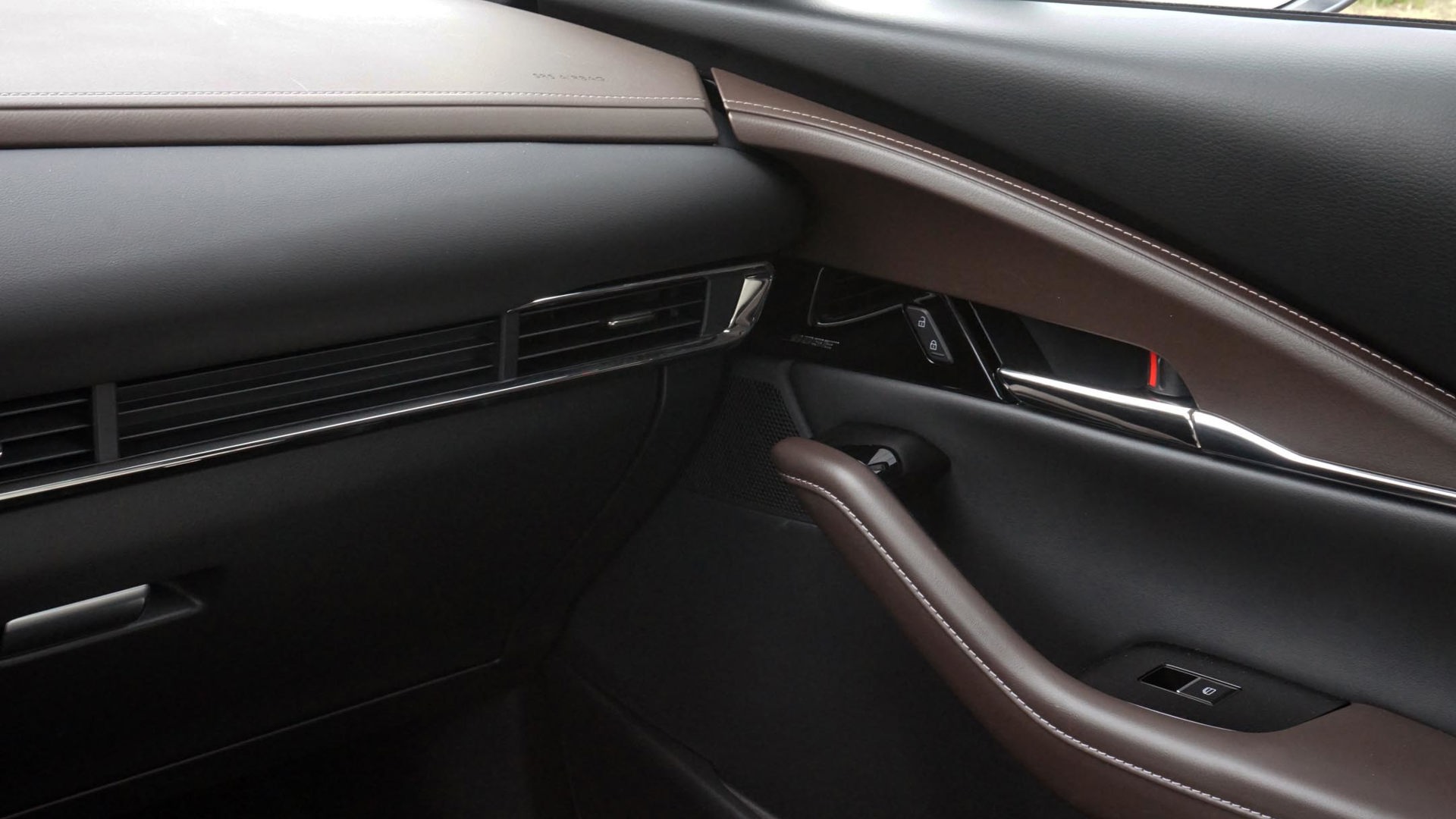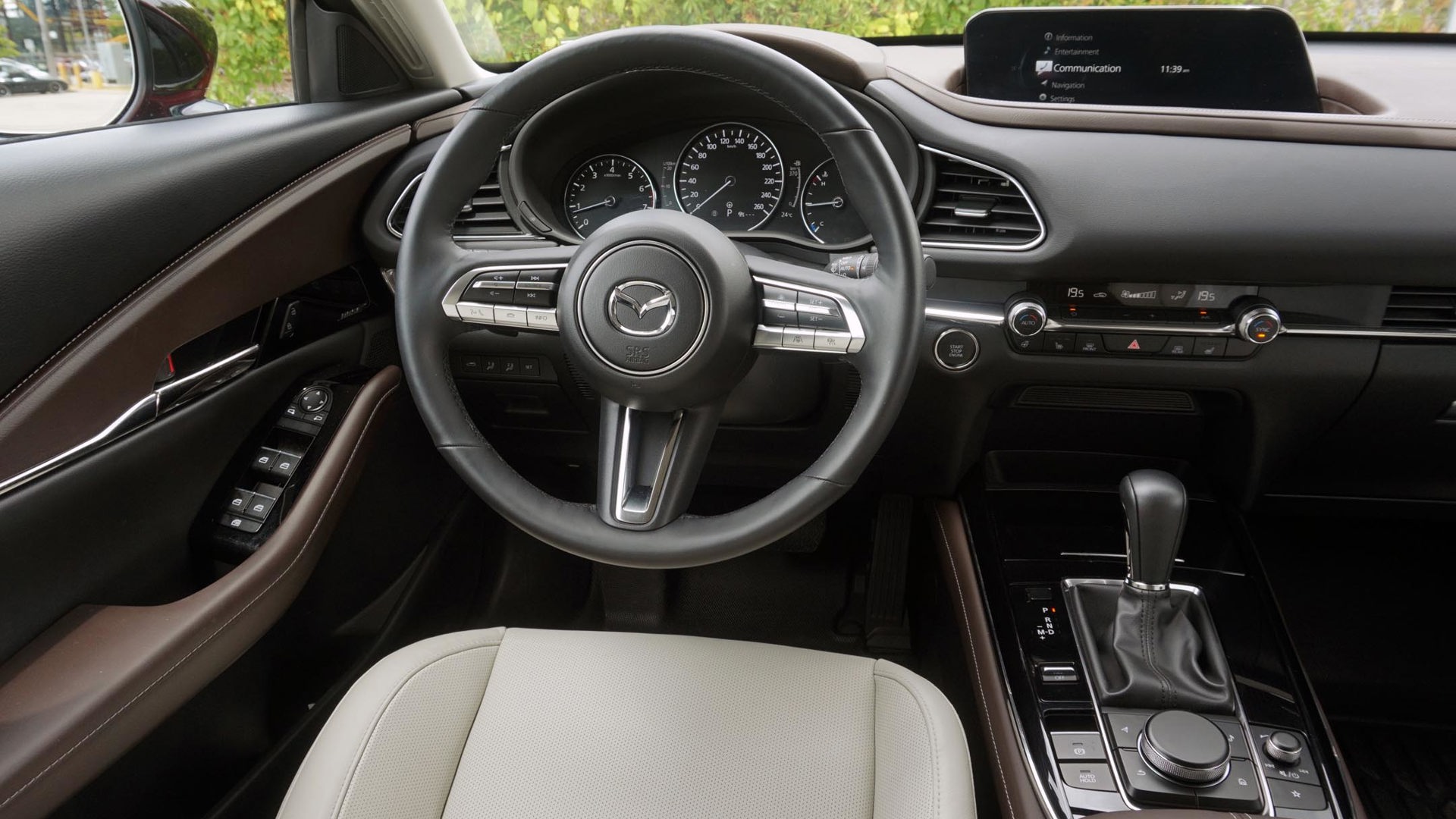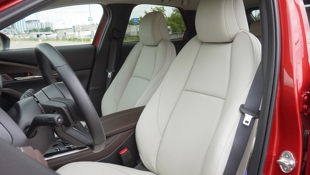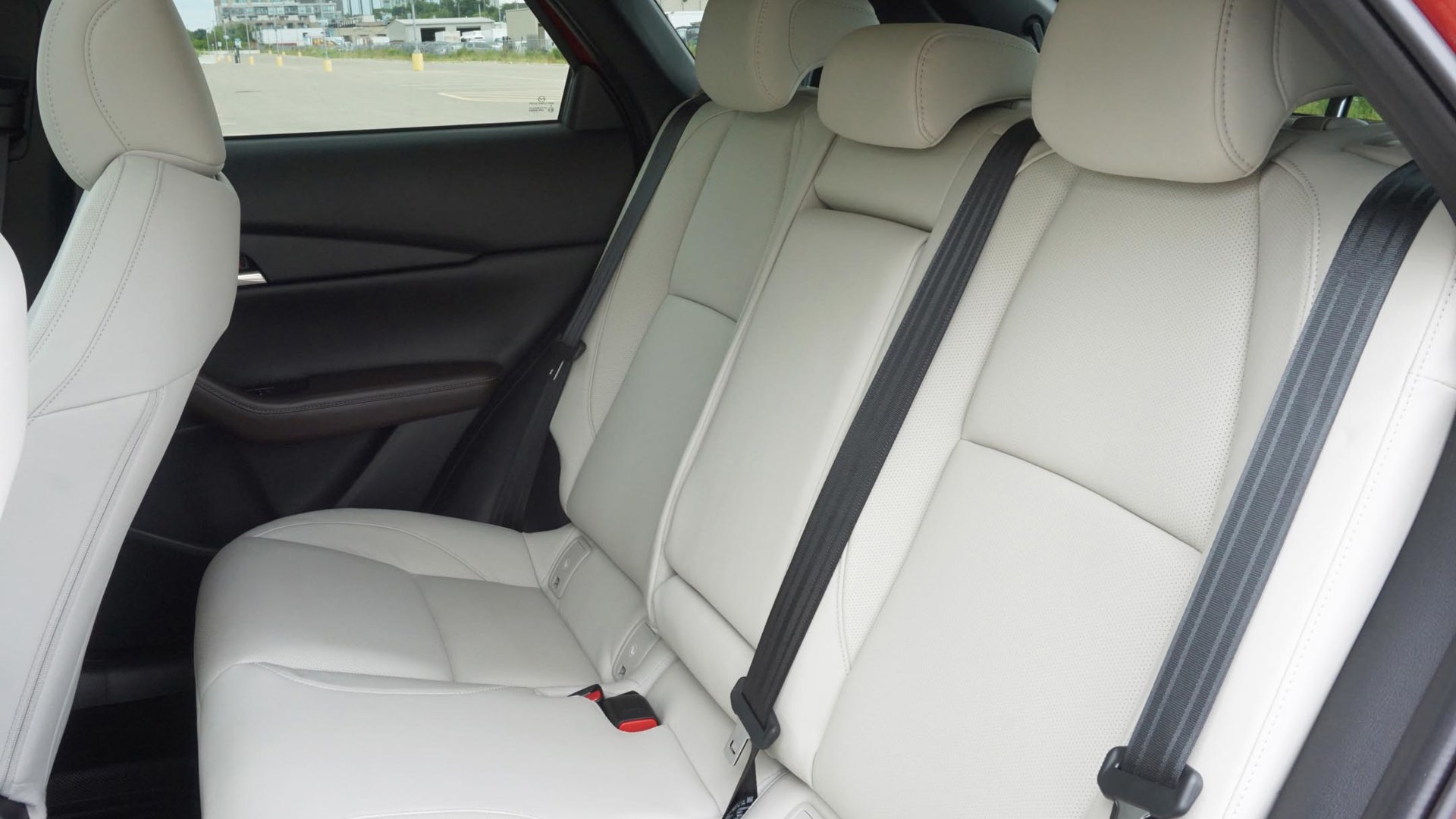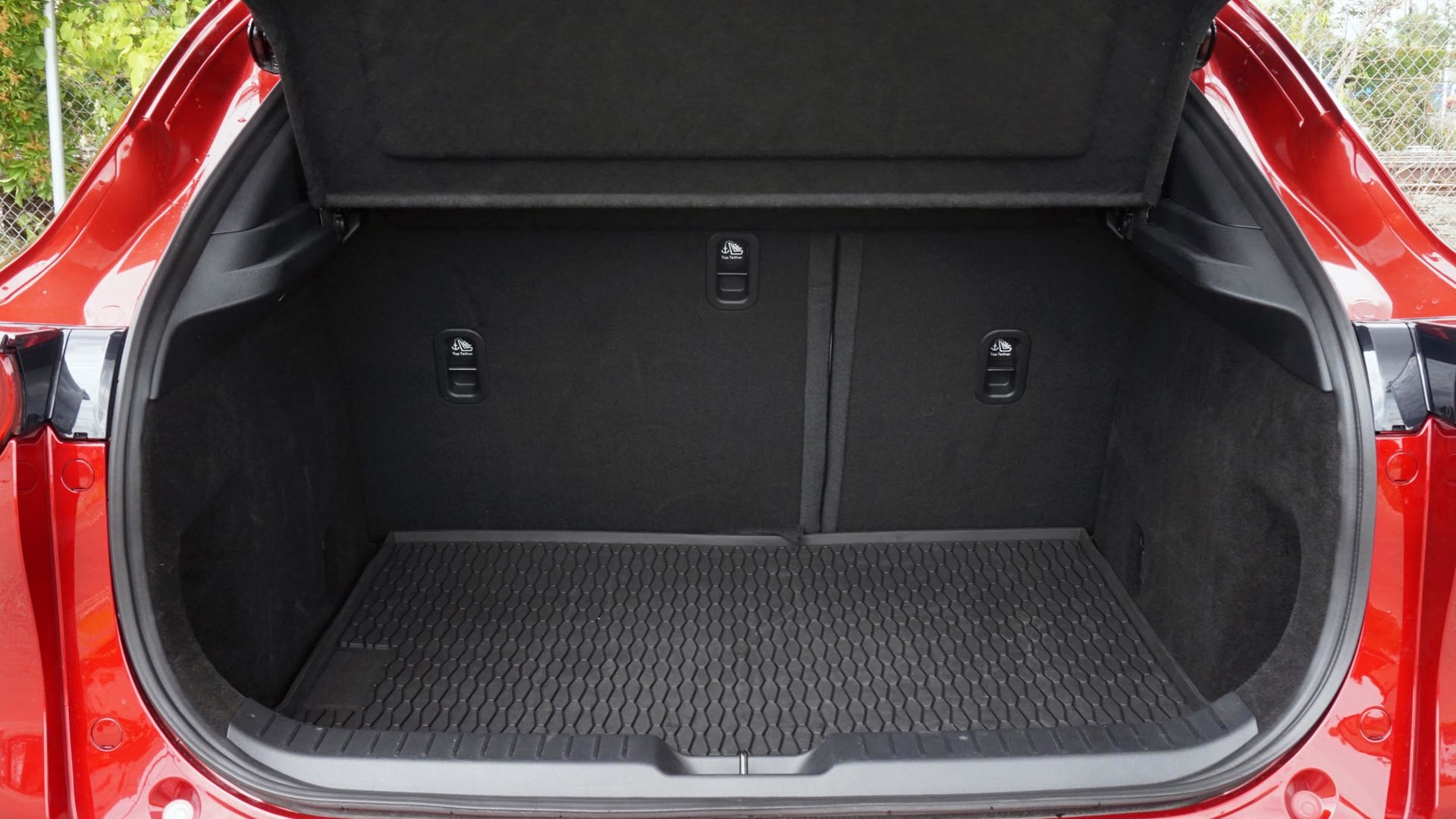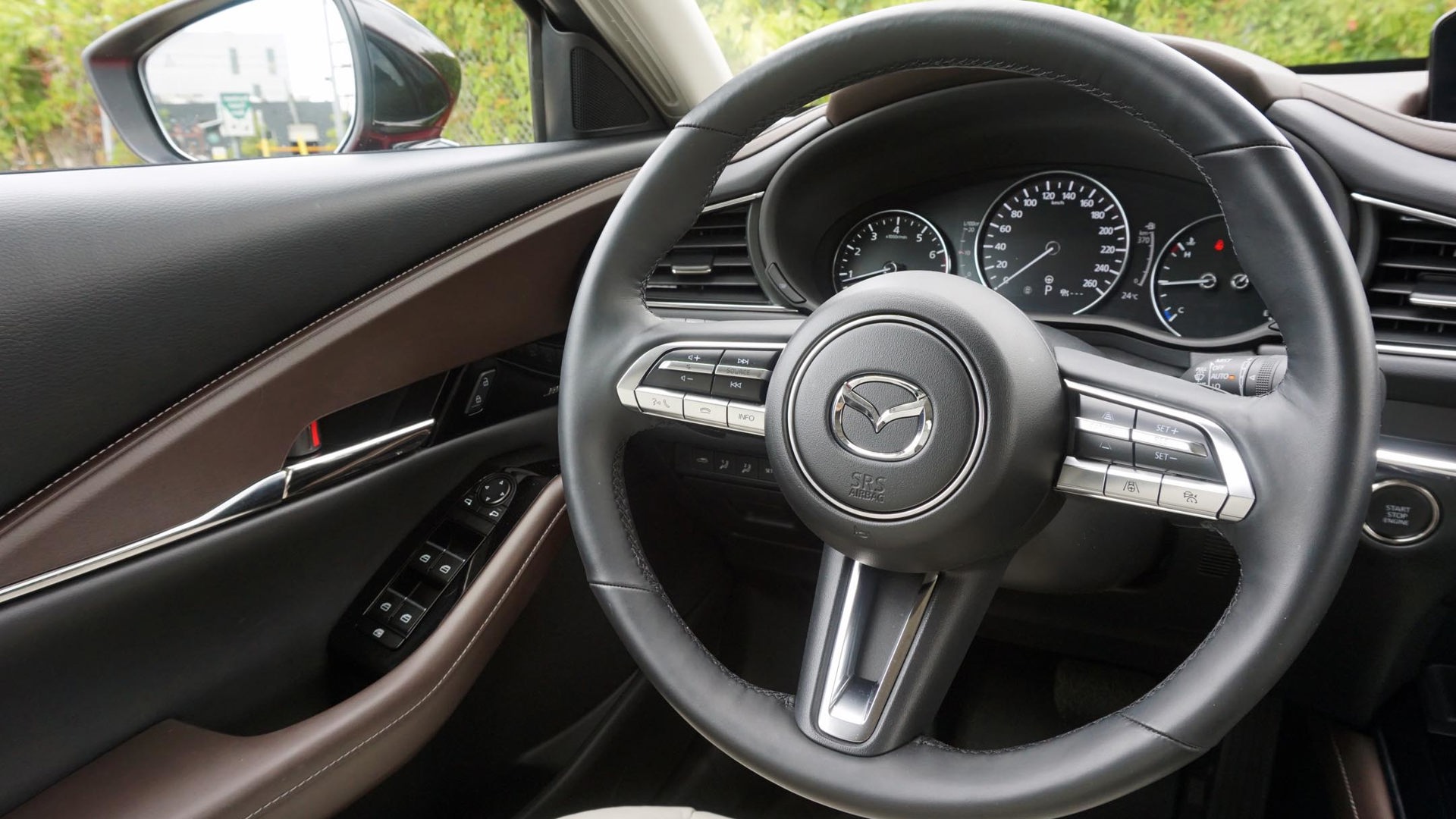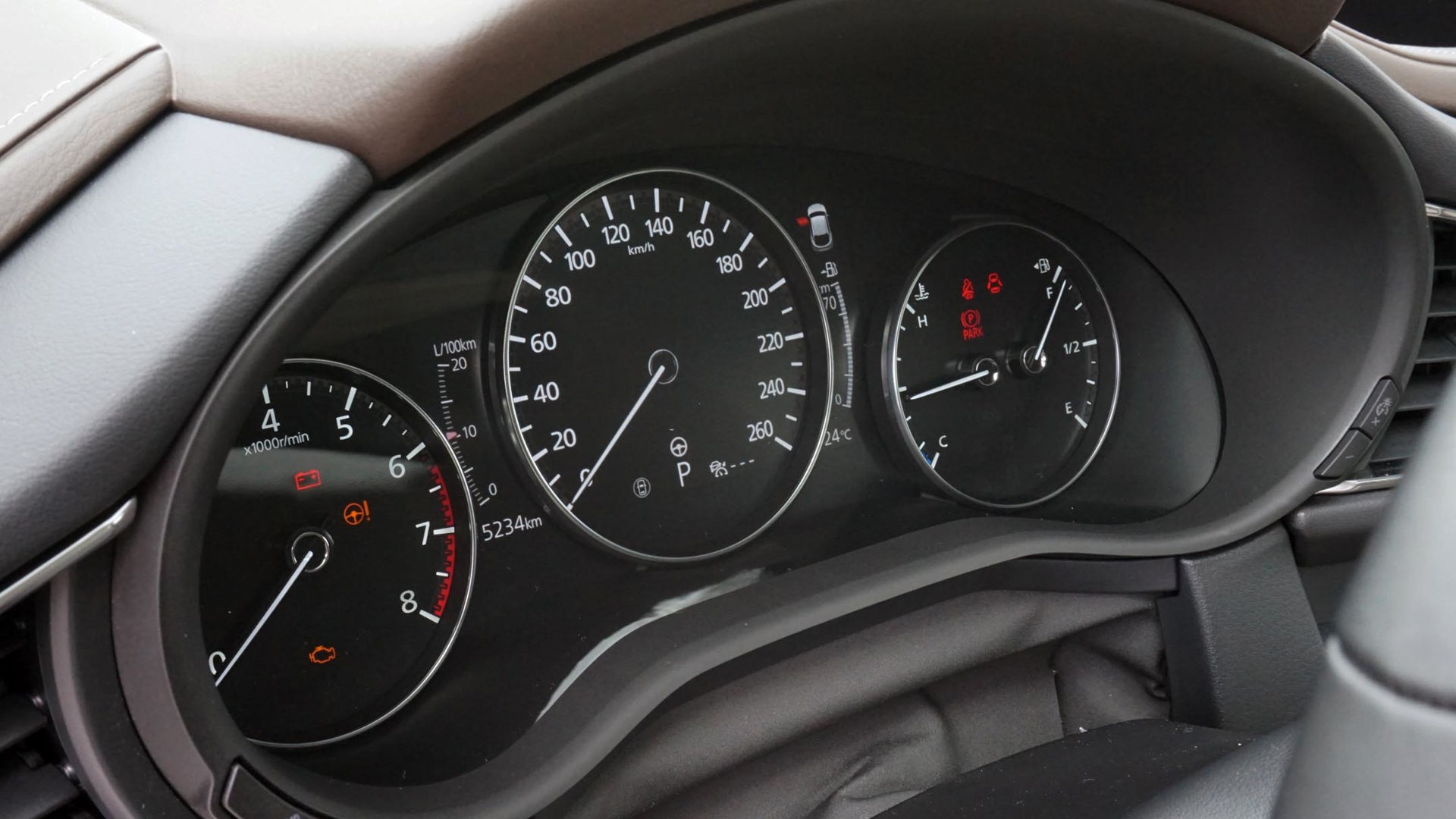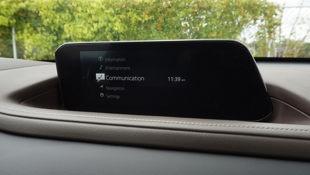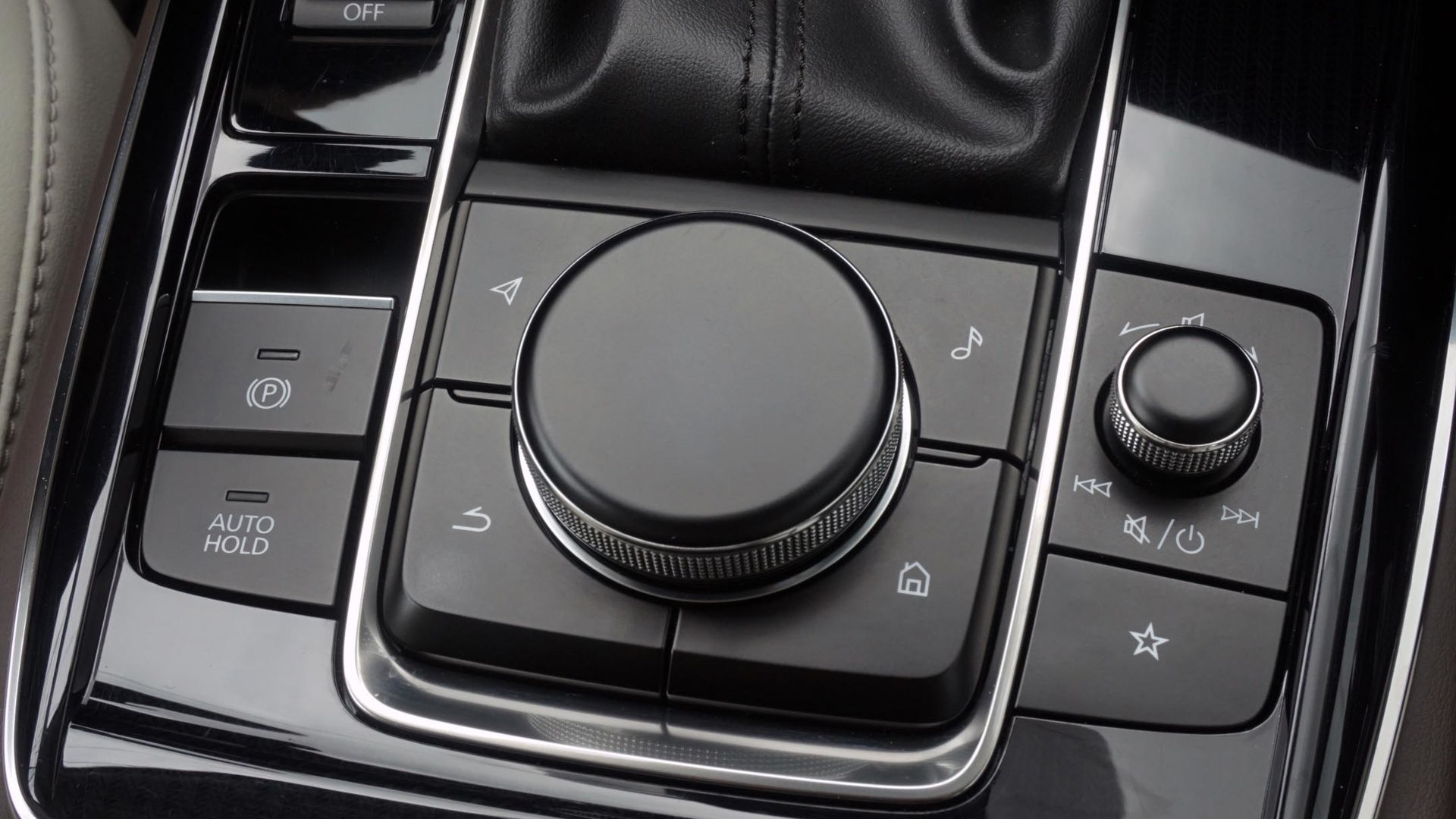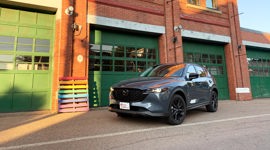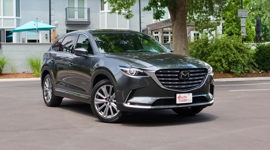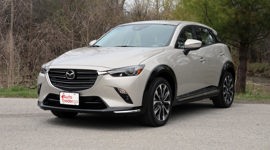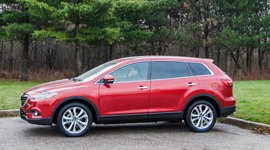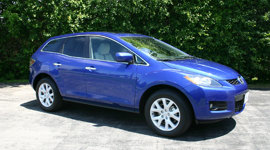 AutoTrader SCORE
AutoTrader SCORE
-
STYLING9/10
-
Safety8/10
-
PRACTICALITY8/10
-
USER-FRIENDLINESS6/10
-
FEATURES8/10
-
POWER9/10
-
COMFORT7/10
-
DRIVING FEEL9/10
-
FUEL ECONOMY8/10
-
VALUE8/10
The 2022 Mazda CX-30 is the Japanese brand’s most affordable crossover, and with standard all-wheel drive, it already has a leg up on a lot of its competition.
As Mazda creeps closer to being a premium brand, it’s time to start cross-shopping it with such automakers as Lexus, Acura, and Infiniti, because Mazda offers a similar vibe at a notably lower cost.
Style: 9/10
Starting with its style, the CX-30 boasts Mazda’s signature sleek shapes and flowing lines, which give it more panache than anything else in its segment. The absence of hard creases is a refreshing departure from other small SUVs, and it looks like I want to look: graceful and dignified.
I love the chrome accent around the grille that extends underneath the headlights, the Italian-looking taillights, and the contrast spoiler. The red paint is also lustrous and deep, and I love how it plays with the swoopy shape of the bodywork to reflect light in an interesting way. The plastic body cladding detracts from the overall luxury vibe but adds a touch of rugged practicality.
Inside, a mix of white, brown, and black leather in this top trim is a surprisingly sweet combination, but I worry about the longevity of the light stuff. The chrome accents and contrast stitching elevate the cabin, but the piano black trim gets dusty quickly and I really wish automakers would use something that doesn’t require drivers to keep a Swiffer in the glovebox.
Driving Feel: 9/10
Besides its style, the Mazda CX-30’s big highlight is its upscale driving dynamics. If you’re used to an Audi or something similar, the Mazda CX-30 doesn’t feel too far off in terms of how enjoyable and engaging it feels to drive. The way it handles corners, its balance, and the weightiness of the steering all combine to make this subcompact crossover drive in a way that’s much sportier and more fun than most other vehicles it competes with.
It feels nimble, and while it rides a bit more harshly over rough, broken roads, the payoff in how well it handles is worth it. The CX-30 does have a rather budget-focused and old-school torsion beam rear suspension, but it won’t make itself known very often.
Power: 9/10
The Mazda CX-30 GT tested is powered by a punchy 2.5L turbocharged four-cylinder that outputs 227 hp and 310 lb-ft of torque on 87 octane gas, and 250 hp and 320 lb-ft on 93 octane. This engine is optional and it’s the one I’d pick, because it makes this little crossover a joy to drive and makes it feel lively. It provides more than enough power to make a quick pass but also keep you entertained.
The base engine in the GX is a 2.0L four-cylinder with 155 hp and 150 lb-ft of torque, while the engine in the GS and GT model is a 2.5L four-cylinder with 186 hp and 186 lb-ft. All Mazda CX-30s come standard with a six-speed automatic transmission and all-wheel drive.
Practicality: 8/10
The Mazda CX-30 holds 572 L in the trunk and 1,280 L with the seats folded down. I was surprised that I was able to easily fit a four-level shelving unit inside.
However, Space and roominess are often sacrificed in Mazda’s vehicles for style, and it shows here. For example, the Kia Seltos, which is one of the best buys in this segment and also offers a turbocharged engine, has 752 L with the seats up and 1,778 L with them folded.
The door pockets are big enough to hold a large water bottle, which is needed because larger ones in the cupholders will knock up against the buttons on the centre console. I also appreciated the numerous options inside for small item storage.
Comfort: 7/10
Passengers in the rear seat will find the accommodations a bit tight, especially if there are taller people sitting in front. Headroom isn’t very generous in the back, and even my taller passenger bonked his head a few times getting out of the car. The seats could also be more comfortable. After a longer trip, we were both a bit sore and fatigued.
Fuel Economy: 8/10
Over about 890 km of mixed driving that skewed more heavily towards highway travel, the turbocharged Mazda CX-30 was returning approximately 8.5 L/100 km. It’s officially rated at 10.5 L/100 km in the city, 7.9 on the highway, and 9.3 combined. For a vehicle of this size, that’s not super efficient but not terrible, either.
User-Friendliness: 6/10
The CX-30’s biggest downfall is its infotainment system, which can only be controlled by a clicky knob on the centre console because the screen isn’t touch-sensitive. The system is incredibly frustrating to use because of how unintuitive it is. Even after a week of using it, I was still annoyed by how much effort it took to complete even basic functions like changing the radio station. Inputting an address into the navigation was painfully slow, as you must scroll through a whole keyboard to type in each letter. It feels like texting with my old flip phone. The menus require too much scrolling to get anything done, and doing so is incredibly distracting when you’re driving. You’ll have to learn to rely on voice commands, which I hate.
Luckily, the CX-30 has a variety of hard buttons on the dashboard and steering wheel that help with climate control and certain functions, but the shortcut buttons surrounding the controller knob didn’t do much to alleviate how annoying it was to use. I should also point out that on three occasions, all audio functions refused to work and the controls seemed frozen even after a hard reset.
Safety: 8/10
Every Mazda CX-30 comes standard with blind-spot monitoring and rear cross-traffic alert, two of the most useful safety features I consider must-haves. Moving up to the GS trim adds adaptive cruise control, pedestrian detection, automatic emergency front braking, lane-keep assist, lane departure warning, automatic high-beam control, and driver attention alert. The GX trim adds automatic emergency braking in reverse, rear parking sensors, and traffic sign recognition.
The GT Turbo model tested comes standard with a top-down 360-degree monitor, front parking sensors, and so-called traffic jam assist that can manage low-speed driving in – you guessed it – traffic jams. It still requires hands on the wheel, though.
The adaptive cruise control didn’t feel very natural to use, requiring me a few times to intervene with the brakes when I didn’t feel comfortable with how quickly the CX-30 was approaching the car ahead. The rear cross-traffic alert would also pick up vehicles that were far out of the range of being dangerous.
Features: 8/10
Android Auto and Apple CarPlay come standard but need a wired connection, and having to use the rotary knob to interact with it strips away some of the benefits of smartphone integration. All the expected features are included in the top trim model, but a true head-up display, adaptive headlights, a 360-degree camera system, and traffic sign recognition are a few highlights.
Value: 8/10
The base 2023 Mazda CX-30 GX starts at $26,350 plus a $1,950 destination fee. The GS model starts at $29,350, and the GT starts at $34,750, plus $2,400 if you want the turbocharged engine. The GT Turbo model tested here goes for just over $40,000 before taxes. A similarly equipped Kia Seltos is thousands of dollars less, but if you look at Mazda as competing against other luxury brands, then the price makes more sense. A Lexus UX starts at about $40,000 before destination, for example. Mazda’s vehicles straddle the line between mainstream and luxury, which explains its pricing strategy.
The Verdict
If driving dynamics and style are your top priorities in a small crossover, the 2022 Mazda CX-30 checks those boxes. Before you commit, however, test driving the Hyundai Kona or Kia Seltos might be a good idea, because they’re also stylish crossovers that offer solid (but not as refined) driving dynamics and have available turbo engines but are much more user friendly.
| Engine Displacement | 2.5L |
|---|---|
| Engine Cylinders | Turbo I4 |
| Peak Horsepower | 227 hp |
| Peak Torque | 310 lb-ft |
| Fuel Economy | 10.5 / 7.9 / 9.3 L/100 km cty/hwy/cmb |
| Cargo Space | 572 / 1,280 L seats up/down |
| Model Tested | 2022 Mazda CX-30 GT Turbo |
| Base Price | $37,950 |
| A/C Tax | $100 |
| Destination Fee | $1,950 |
| Price as Tested | $40,650 |
|
Optional Equipment
$650 – Soul Red Crystal Metallic, $450; Pure White leather interior, $200
|
|
